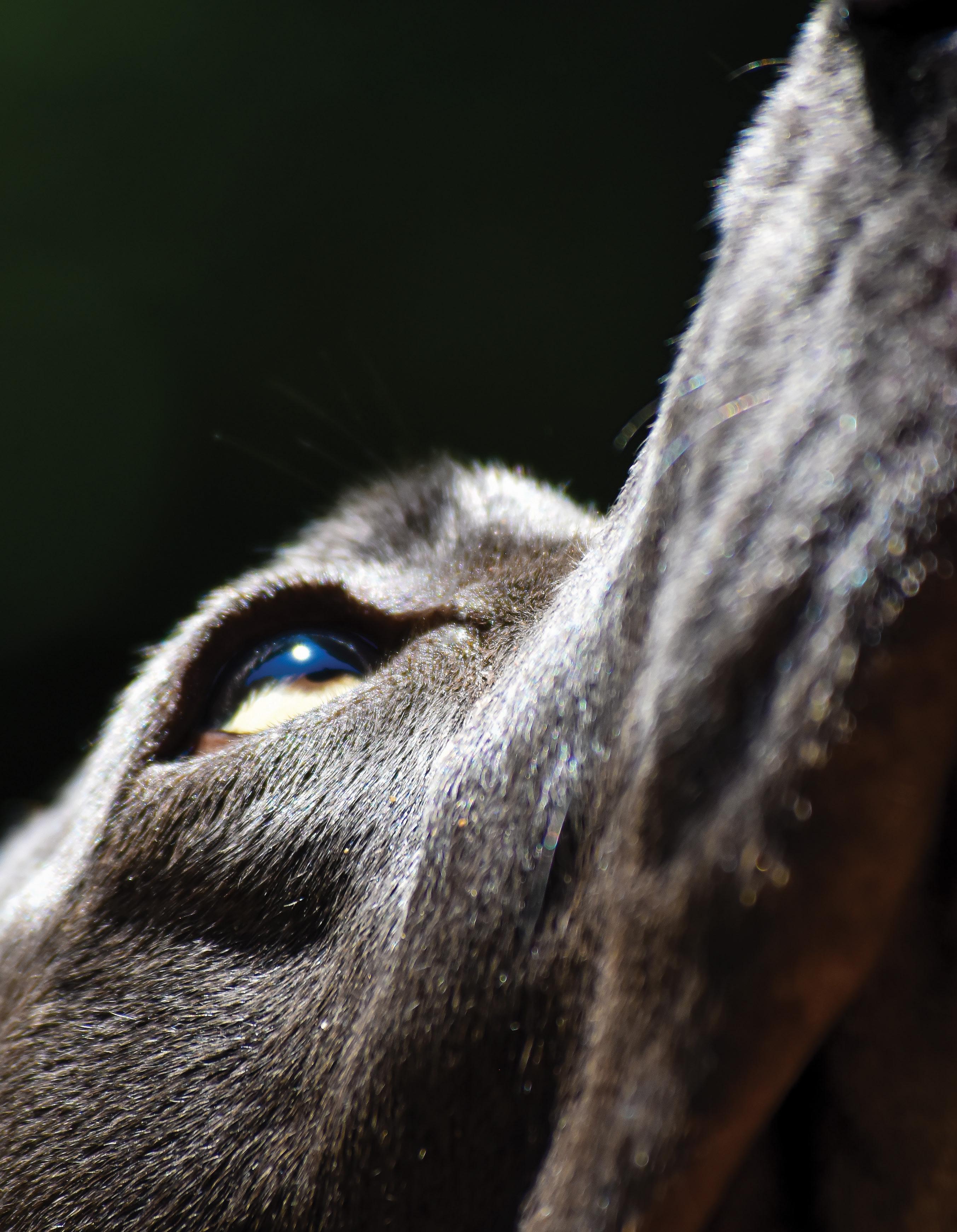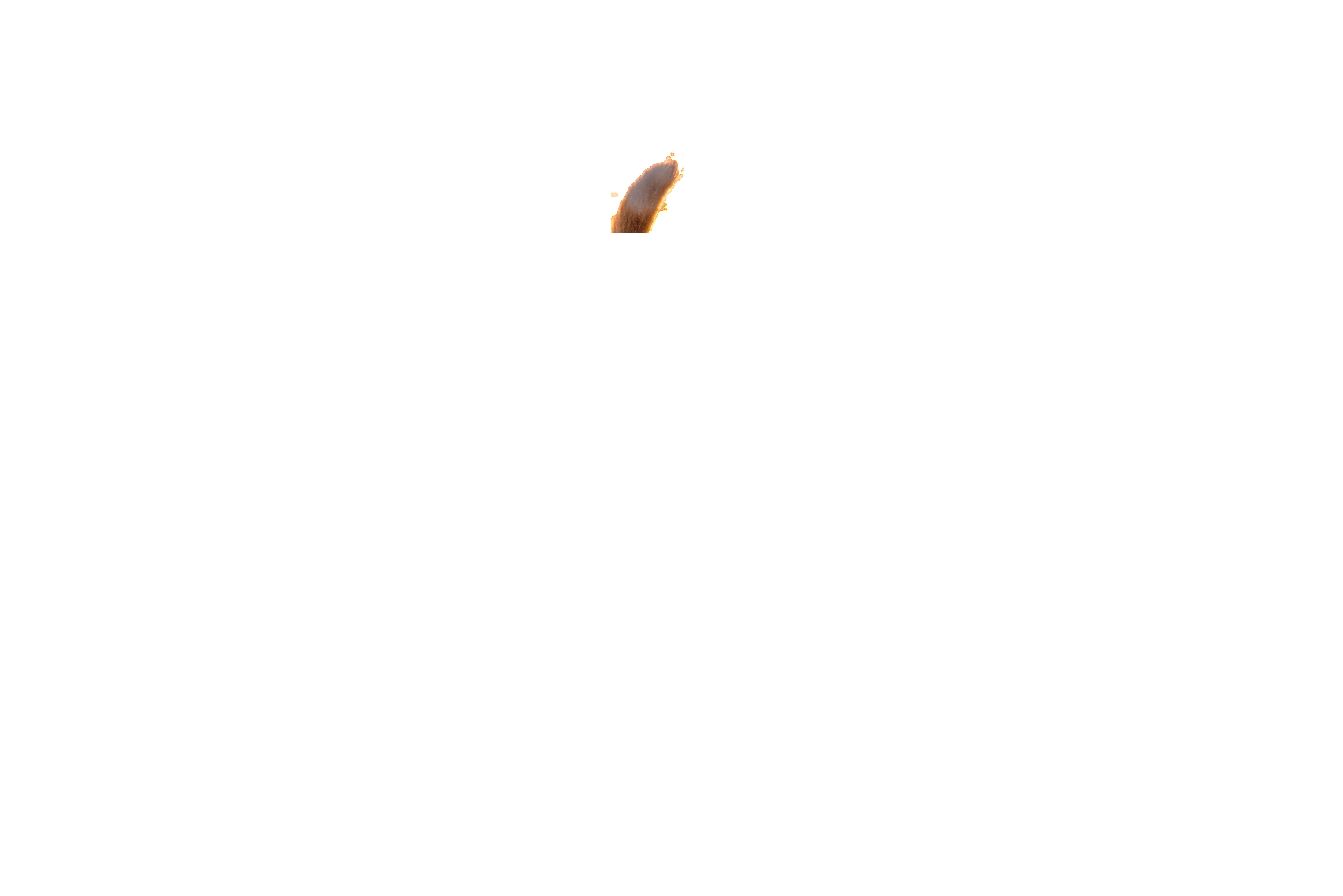
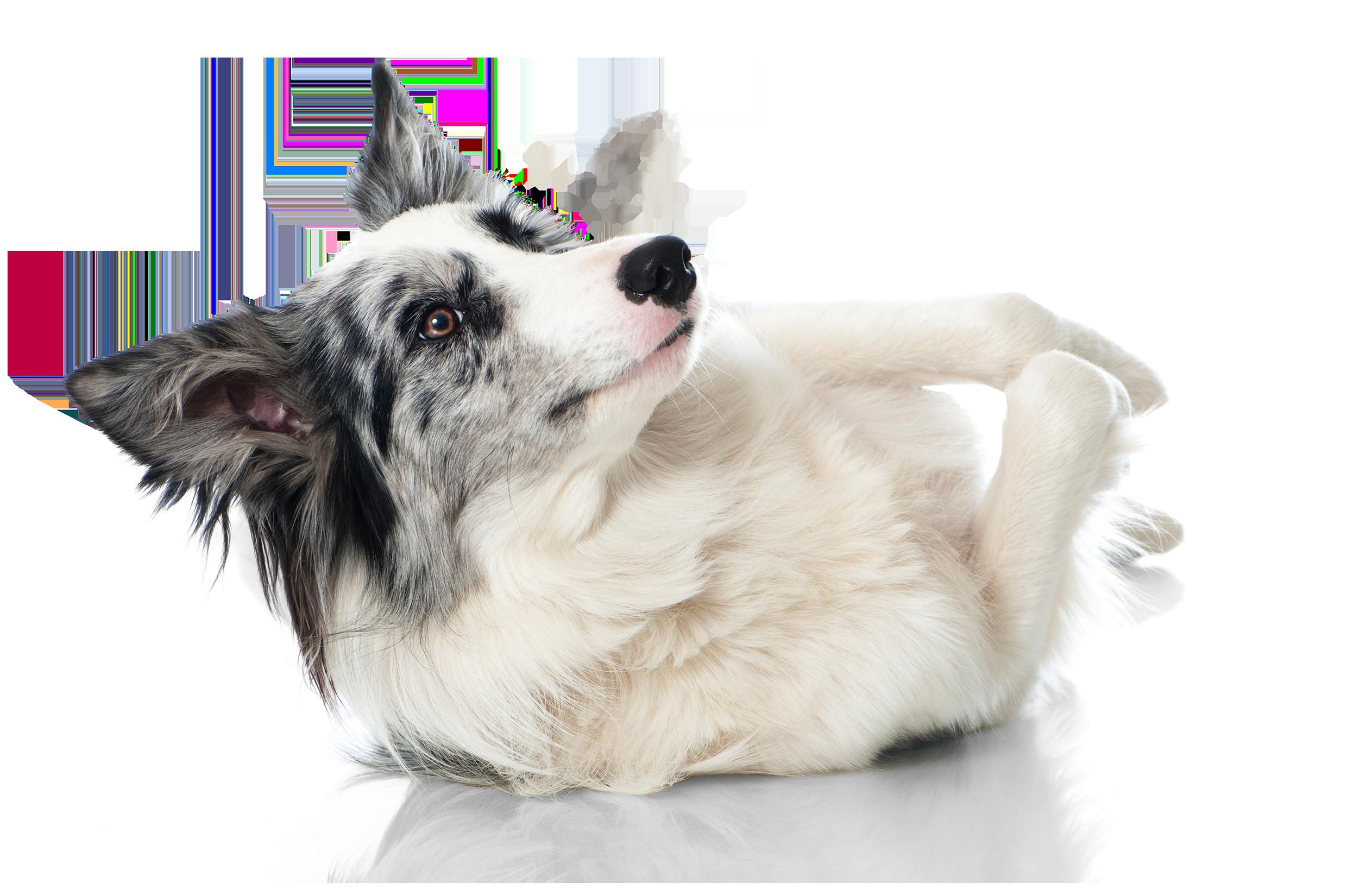
Hello and welcome to Issue 5A of DQ Magazine!
This issue marks the magazine's first anniversary, and I, for one, cannot believe it's already been a whole 12 months. The journey so far has been incredible, and we feel so fortunate to still be producing the magazine today. The past year has seen us work with many amazing and passionate people and receive encouragement from dog owners and enthusiasts from across Southern Africa; for this, we are incredibly grateful. Over the next few months and years, we will endeavour to continue to be worthy of your readership and support. Thank you for a fabulous first year!
Packed into this issue, we have our usual abundance of interesting features, plenty of which may pique your curiosity. Our goal is that our content helps reaffirm your current knowledge, makes you rethink your previous understanding, and perhaps even sparks an interest to go and find out more. If we're managing most of that, then we're a very happy Team DQ.
From all of us here – thank you! We'll see you again on the 15th of April.
Lots of love,
Dr Lizzie Harrison | Editor
Designer: Anne Royden-Turner
DQ | 5A 3
xxx
Lizzie and the DQ team



DQ | 5A 4 IN THIS ISSUE DIGITAL ISSUE 5A | 2023 06 The Beagle A scent hound par excellence 16 Dog size classification Part 2 22 Dog sense Understanding the five senses 28 Trimming paw hair At home 30 Adding a second dog Does gender matter? 38 Puppy push-ups Instill the basics 46 Ring the bell Train your dog to ring a bell when he wants to go outside 52 Choosing the correct bed For your compromised companion 58 It’s mine Resource guarding in dogs 62 It’s all in a look Research from Harvard 64 Seven games To increase canine mental stimulation 68 Ask DQ Your dog questions answered 70 Products we love





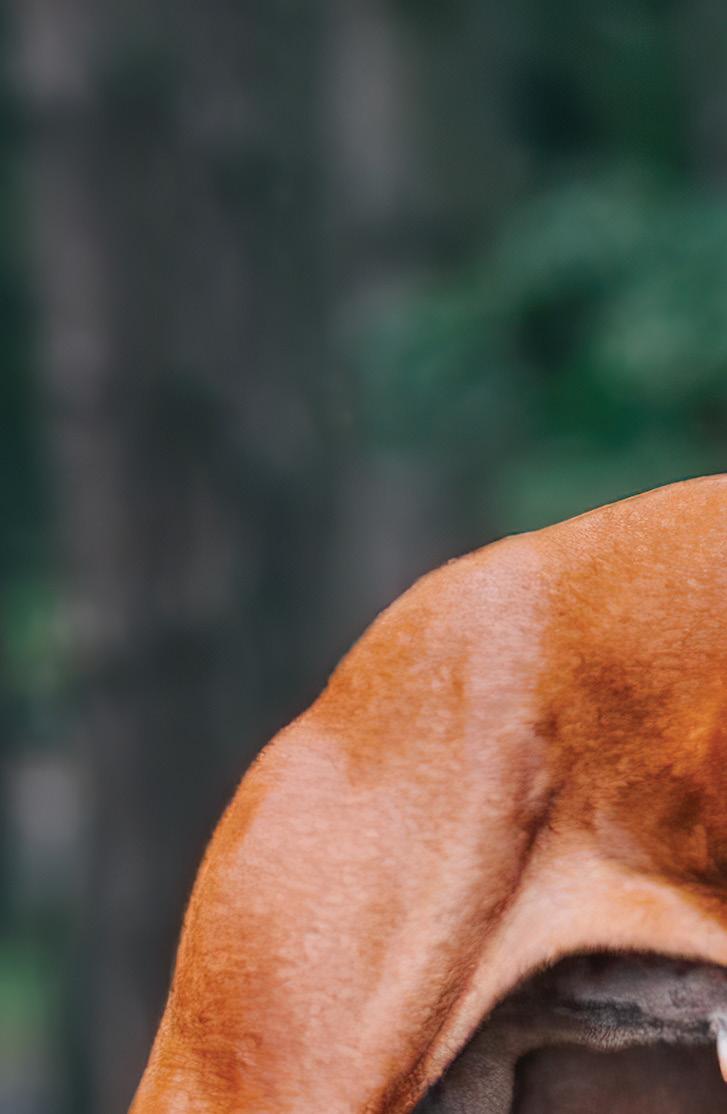
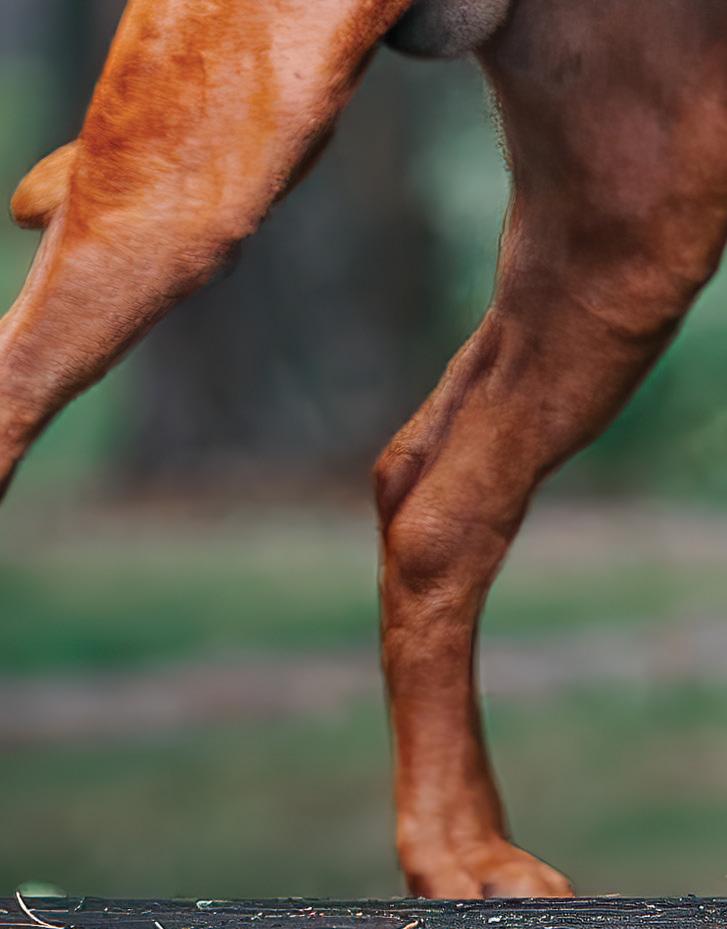
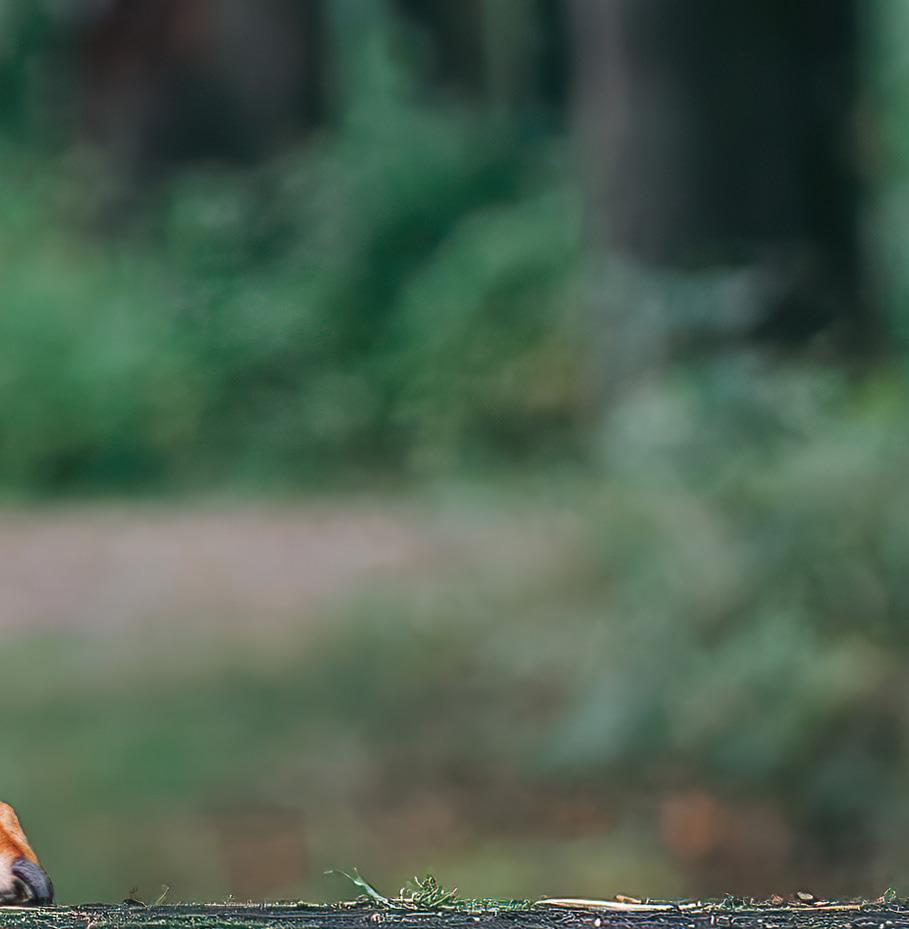
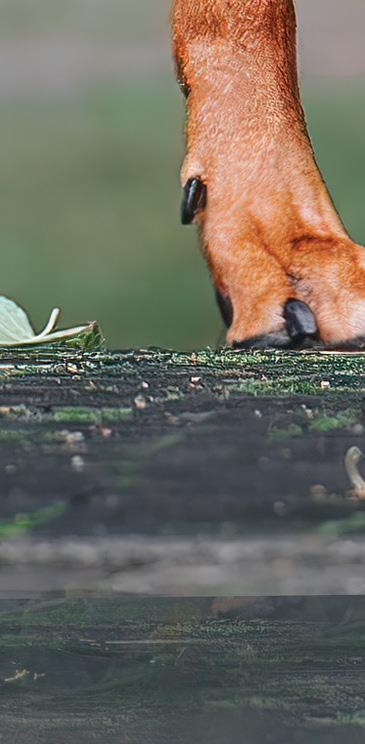
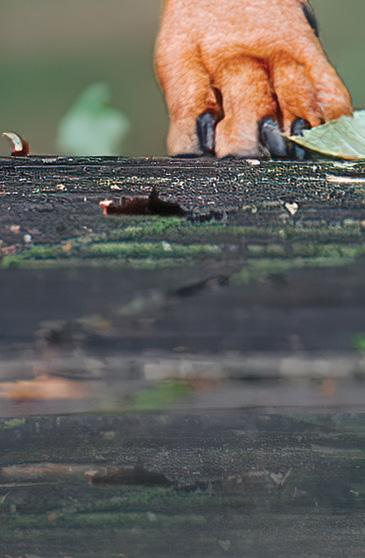
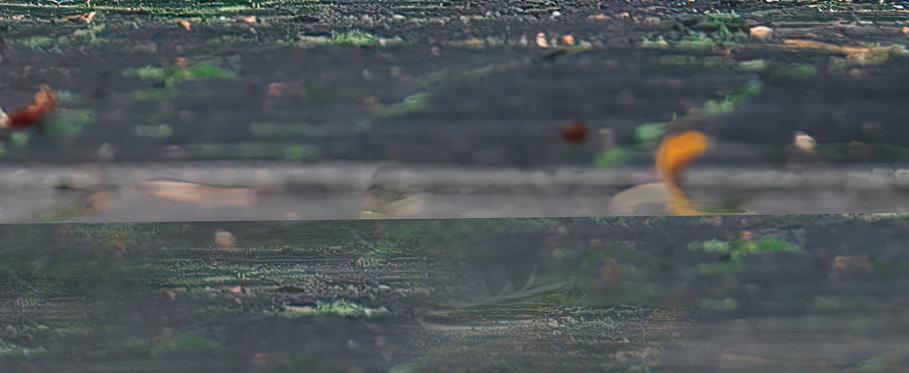









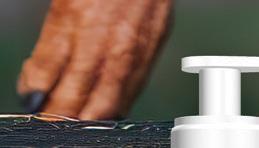

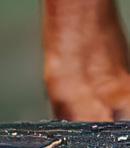
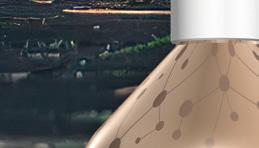

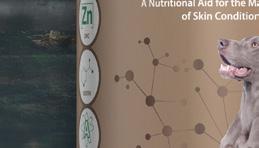
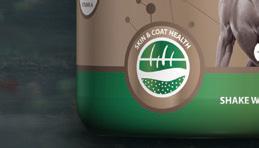
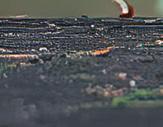

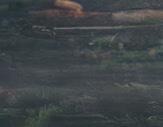




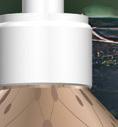

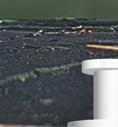



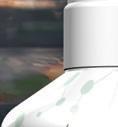





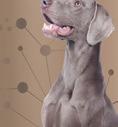


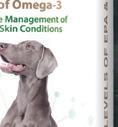



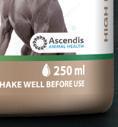




























































































































































































































































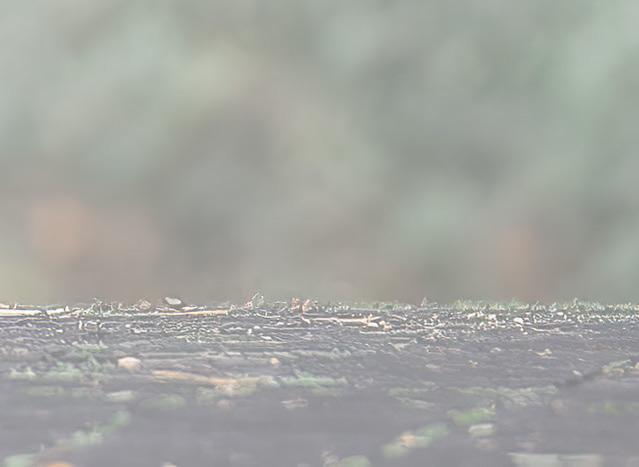















DQ | 5A 6
BREED PROFILE
The
Beagle
A SCENT HOUND PAR EXCELLENCE
BREED PROFILE
DQ | 5A 7
TEXT: RHIANNON CECIL
In this issue, we take a look at the benevolent Beagle. This gorgeous breed has been alongside man throughout the throes of history, whether it be hunting, as a companion dog, or both. Don't let his cute looks and silly demeanour fool you, though; this is one tough scent hound. He is dedicated to the hunt. Where his nose goes, you are sure to follow, because he is seldom wrong. The Beagle always nose, you know.
BEAGLE OVERVIEW

A Beagle's nose guides him through life, and boy, does he love a good scent. This scent hound was bred to accompany hunters and help them sniff out their prey. Beagles are smaller than other hounds, so that hunters could hunt on foot as opposed to horseback, with their diminutive companions in tow. Hunters mainly employed Beagles to help them catch hares and rabbits, but they have been known to take down larger prey such as jackals and wild pigs.
The Beagle is a true pack animal and, to this day, prefers to be in company. Today, Beagles are still used for hunting, but like all modern dogs, they have adapted to living a life of domestic luxury. They're exceptionally friendly to other dogs and don't take long to warm up to strangers, either. Needless to say, they are well-known for being excellent family dogs. Beagles are often described as cheerful and a little goofy, and they absolutely love affection.
Traditionally, Beagles are bred in two size categories. The first being roughly 30cm or lower and the second between 30cm and 38cm. They can be classified as small or medium dogs as their weight can vary between 8kg and 14kg. Beagles come in various gorgeous colours, but the most traditional are black, tan, and white—the true colours of a hound dog. Their most distinctive features are their long droopy ears and their soulful, pleading eyes that make you want to donate an entire meal to their cause.
DQ | 5A 8
BREED PROFILE
FUN BEAGLE FACTS
• Beagles are pack hunters: This means they hunt cooperatively. Each pack has a hierarchy, and each dog performs a function to successfully complete the hunt.
• The smaller Beagles were bred to hunt in more confined spaces: Larger Beagles were bred to hunt in open areas and could cover more ground. Aside from their size, the smaller and larger Beagles are exactly the same, and any litter could produce a small or large Beagle.
• A Beagle's ears hang soft and are never erect: When a Beagle has his nose to the ground, those floppy ears help gather and concentrate the scent around the nose.


• Hunters keep track of their dogs by following the beautiful voice of the Beagle as well as by spotting the white-tipped tail in the long grass.
• Beagles are extremely vocal: They use their voice to communicate on hunts. Beagles have many ways of communicating. They have a firm bark, a bale, a yodel, and an all-out howl. They can also mix these up to create some very interesting vocalisations.
• Beagles make excellent therapy dogs: Their happy-golucky and friendly demeanour will brighten anyone's day!
• Celebrity Beagles: Beagles have been the feature of motion pictures, artworks and illustrations throughout the centuries. The breed has won the hearts of many celebrities and royalty. The most famous Beagle of all time is our old pal Snoopy. The character Snoopy was created by Charles M. Schulz, and first appeared in comics in 1950. Schultz based the character on a black and white beagle he had as a teenager.
DQ | 5A 9
BREED PROFILE
BEAGLE HISTORY
Beagles are among the oldest dog breeds. Greek writings from 400 BC refer to small scent hounds bred to hunt rabbits and hares, and these could be the ancestors of today's Beagle. Today's Beagles, however, look quite different from their ancestors, mostly due to the many invasions throughout history and the breeds that these brought with them. When a foreign land invaded new territory, they would bring their hunting and herding dogs along to assist in establishing a settlement. Throughout the course of the invasion and for centuries after, local dogs were bred with dogs from other lands, and this changed the course of many breeds.
In England, Beagles became popular very early in history. During the reign of King Edward II (1307-1327) Beagles were bred small enough to hold in a gloved hand. During this time, most Beagles stood 20cm or smaller. Although they were very good hunters, they weren't very popular for hunting due to their lack of speed.
As fox hunting increased in popularity during the 1700s, the Beagle breed almost died out. The Fox Hound was the preferred dog for the job, but luckily farmers around the British Isles still relied on Beagles to hunt small game and were able to keep the breed going.

The 1800s marks the beginnings of the modern-day Beagle as we know it. Reverend Phillip Honeywood developed a pack of Beagles in Essex, England. These Beagles were bred predominantly for their hunting skills until Thomas Johnson began refining the breed. He started breeding Beagles for their looks, but they were still excellent hunters.
Wealthy English hunters always kept packs of large dogs to assist them in the hunt. These larger dogs had to be accompanied on horseback due to their speed and the amount of ground they covered during a hunt. The Beagle's specific traits gave the average person —who couldn't afford stabling and the upkeep of horses — a way to hunt small game on foot. Hence they earned the name "foot hound."
The modern age has given the Beagle a function to perform, sniffing out contraband at airports. They are preferred for this job as they are not intimidating and don't scare or make people nervous, but there's no denying it, they are excellent at what they do.
DQ | 5A 10
BREED PROFILE

DQ | 5A 11 BREED PROFILE
LIVING WITH A BEAGLE
If you're looking for a great family dog, the Beagle is definitely top of the list. The breed is best described as bouncy, always active, always happy, and always glad to see you. They are extremely affectionate and loyal, and they just love to play.
Beagles have been rated in the top 10 breeds by the American Kennel Club for more than 60 years, and for good reason. Beagles are super active and athletic and perform extremely well when put to the test. They are easy enough to train, but you must start early on. They are eager to please, but the rules need to be firmly in place to prevent lifelong bad habits from setting in.
This means that, should your Beagle not get the required attention and stimulation, they can develop bad habits and can be quite destructive. If they aren't content in their surroundings, they can also develop eating disorders. Beagles have an intense food drive and will eat whatever
they can if given a chance. Owners need to be extremely disciplined when it comes to feeding and exercise.
A Beagle's grooming needs are minimal; they are shedders, but the hair is so short it's hardly noticeable. During the colder months, their coat does thicken, so you'll need to give them a solid brushing in the spring. Check your Beagle's ears regularly. Due to their shape, air does not circulate well, and this could result in infection.
Beagles love to exercise and make great running companions once they mature. They really love to run in an open field, but make sure to train your Beagle to come back to you, or you'll have a long and frustrating day trying to track him down while he follows every scent he can find.
A microchip is essential, so if your wandering canine friend gets away, he can be easily returned. A solid fence, preferably one that runs underground, is another nonnegotiable for Beagle owners. Once he gets the scent of something he wants, he will risk everything to get at it.
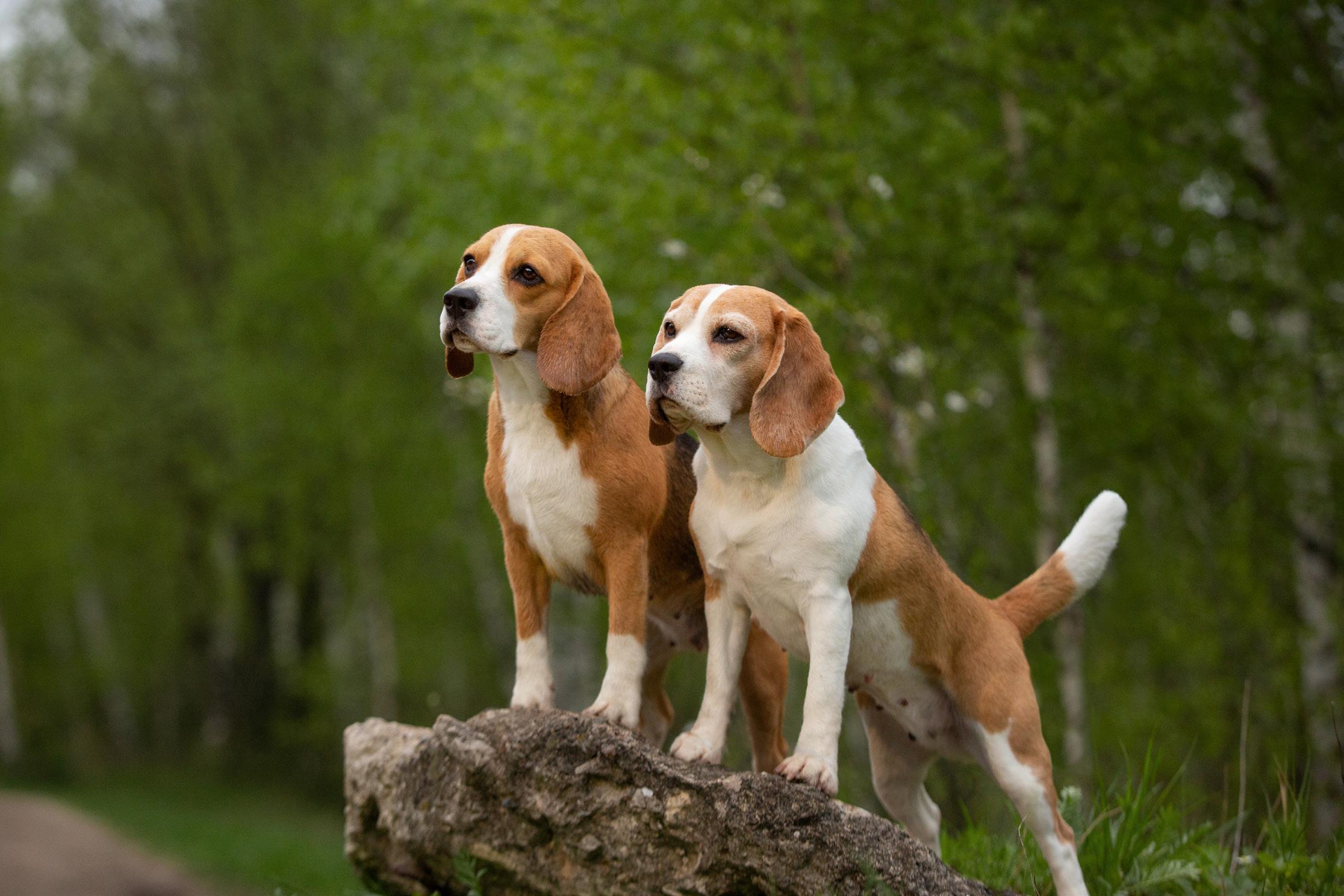
DQ | 5A 12
BREED PROFILE
BEAGLE HEALTH
Beagles are generally a healthy breed, but here are a few things to watch out for should you consider adopting a Beagle into the family:

• Ear Infections: Due to air not circulating well around the ears, they are prone to ear infections. It is wise to check your Beagle's ears for redness, inflammation, or a bad odour every week or so and look out for signs of ear infections such as head shaking and excessive ear scratching.
• Hypothyroidism: If your Beagle is experiencing a dull coat, hair loss, tiredness, weight gain or intolerance for cold weather, have your vet check his thyroid activity. Hypothyroidism is easily treated with a daily thyroid hormone supplement.
• Idiopathic epilepsy: This condition is quite common for the breed. Seizures show themselves in many forms, but
luckily, the condition is easily managed with anti-seizure medication. Should you suspect your dog is having a seizure, stay calm and capture a video of the incident so your vet can accurately diagnose the issue. Don't try and intervene; rather, let the seizure play out unless your dog is in imminent danger.
• Obesity: Beagles aren't called chow hounds for nothing; these dogs love to eat! It is vital to monitor their food consumption, especially when they get a bit older and start to take their foot off the pedal.
When it comes to our precious fur babies, we always want them in pristine condition. If you notice any strange behaviour, ailments or symptoms, it is always a good idea to consult your veterinarian, no matter how small you think the problem may be. Minor symptoms may be a sign that something larger is at play, and we always feel it is better to be safe than sorry.
DQ | 5A 13
BREED PROFILE
IS A BEAGLE THE RIGHT DOG FOR YOU?
A Beagle might be the right dog for you if:
• You want a happy-go-lucky, fun, and loving family dog that is always willing to please.
• You have a medium-sized garden for them to play in.
• You enjoy walking or running, as a mature beagle has a tonne of stamina.
• You have other dogs at home; these dogs do better with canine company.
• You want a dog that is low maintenance in the grooming department.
• You enjoy participating in canine games or enjoy canine showing competitions.
• You enjoy plenty of poochy playtime; these dogs are dedicated to having fun!
A Beagle might not be the right dog for you if:

• You can't handle excess barking and noise; these dogs are extremely vocal.
• You live in an apartment; these dogs need to be kept busy and active.
• You don't have a secure property to keep them in; these dogs love to roam and chase after a scent.
• You only want a single dog.
FINAL THOUGHTS
Beagles are comical, loving and affectionate dogs who make a mark on everyone they come across. Their happygo-lucky attitudes and goofy demeanours mean they get away with multiple offences; after all, how can you be angry with that gorgeous smile and soulful chocolate eyes? They are loyal, lovable companions with just the right amount of spunk to keep things interesting. They are devoted to your children and possess an easy-going nature that's challenging to replicate.
If you're considering adopting a Beagle, be sure to only use ethical breeders who have done all the necessary health checks. Then, be prepared to be entertained constantly and receive big sloppy kisses in reward for just being their human. These dogs don't ask a lot from us, but we are their entire world!
DQ | 5A 14
BREED PROFILE
Interacting with a dog can benefit both your physical and mental health. Studies have shown that stroking a dog for 15 minutes can lower blood pressure by 10% and reduce feelings of stress, depression and loneliness.
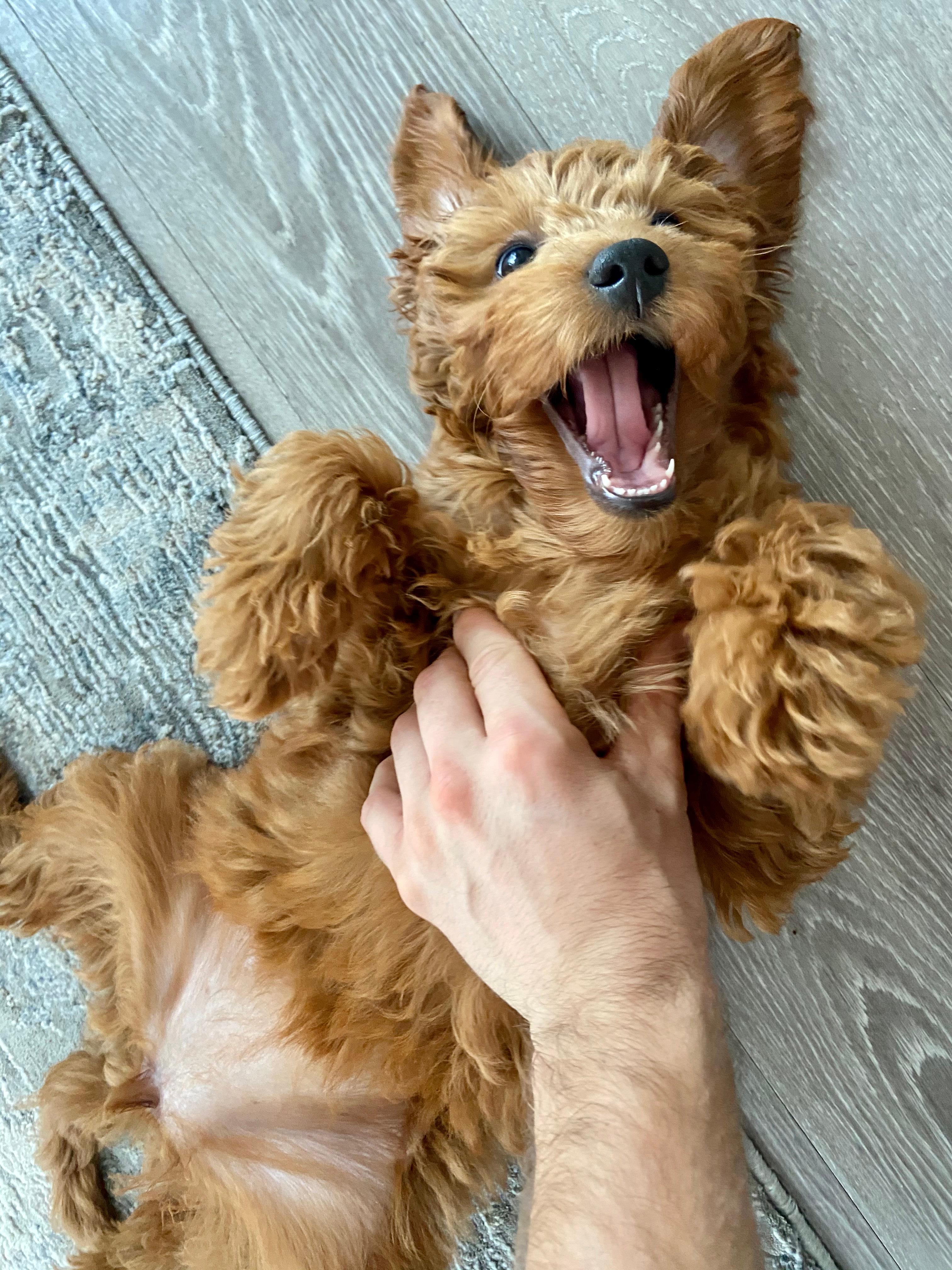
DQ | 5A 15 FOCUS
Dog size CLASSIFICATION
Welcome back to the final part of the breed classification series. Last issue, we looked at small and medium breeds, as well as the specifics of classifying your dog into a size category. This time, we’ll focus on the larger breeds to find out what sets them apart.

LARGE AND GIANT BREEDS
Many larger breeds came to the brink of extinction during the Industrial Revolution, and were forced to adapt to a new world. Breeds like the German Shephard etc began to fill unfamiliar roles that included guarding, protection, and scent work.
PART 2
DQ | 5A 16 DOGS AT HOME
TEXT: RHIANNON CECIL
Today there aren't many jobs for working dogs, but many larger breeds have adapted well to domestic living. Breeds known for weathering the elements and their sheer brute strength are now found cuddled up on couches, being loved by families across the globe.
Large breed dogs are split into two categories by weight:

• Large Breeds: 26kg to 45kg
• Giant Breeds: 45kg or more
WORKING DOGS— A BRIEF HISTORY
Large and giant breed dogs were mostly bred to assist and work with human beings in our everyday lives. Before the Industrial Revolution, life was quite different. Large breed dogs worked extremely closely with farmers, tradesmen, hunters, herders and sledders. They made everyday tasks easier and safer, and were also used to ward off rustlers, herd livestock, pull carts and protect tradesmen traveling from town to town. These working dogs needed to be hardy and robust, but also intelligent and responsive to commands. These dogs don't just enjoy working, they live for it.
For centuries, travellers have been taking dogs across the world to perform tasks such as herding and protection of property and family members. These ancient dogs were often bred with local dogs of the region. This commonly resulted in a dog better suited to the local climate and terrain. Many of these ancient canine breeds have died out through the ages, leaving only remnants of their genetic makeup for us to enjoy in the modern dog breeds we see today.
LARGE BREED DOGS
If you are adopting a large breed dog, you may be interested to know that although they are easy to train, they are rather active, and need tonnes of mental and physical stimulation. Large breed dogs are accustomed to working for their supper and don't do well in an idle environment. Large breeds make great companions for those who enjoy the outdoors, and some are ideal for families. These dogs are bred to be tough, athletic, and have lots of stamina. As robust as they are, large breeds have huge hearts with tonnes of love to give. As the saying goes "the bigger the dog, the bigger the cuddles!"
DQ | 5A 17 DOGS AT HOME
DOGS AT HOME
You must also remember that everything is larger when it comes to large breeds. They eat bigger portions of food and require larger accessories, beds, and kennels. These dogs tend to live between 12 and 15 years. NOTE: Doing research is a vital when choosing a large breed dog to find the breed that best fits your lifestyle.
IF YOU ARE UNSURE IF A LARGE BREED DOG IS FOR YOU, HERE ARE SOME PROS AND CONS:

PROS OF OWNING A LARGE BREED DOG
• If you live an active lifestyle and enjoy walks or runs, then a large breed is perfect for you.
• They are robust and won’t get injured easily.
• Working dogs are ideal participants in canine sports.
• They are perfect if you have a large garden.
• They make intimidating watch dogs and will keep unwanted intruders on the other side of the fence.
• They are extremely trainable, and you will be rewarded with the effort you put in.
CONS OF OWNING A LARGE BREED DOG
• Cost of living is greater than for their smaller counterparts.
• They’re more difficult to handle.
• They can be extremely destructive without adequate stimulation.
• Experienced dog sitters are needed when going on holiday.
• Larger breeds tend to have shorter life spans.
• Outings need to be carefully planned.
DQ | 5A 18
COMMON LARGE BREED DOGS

• German Shepherd
• Boxer
• Standard Poodle
• Rottweiler
• Doberman Pinscher
• Siberian Husky
• Mastiff
• Weimaraner
• Vizsla
• Bloodhound
• Rhodesian Ridgeback
• Akita Dog
GIANT BREED DOGS
Giant breed dogs are impressive specimens - they leave jaws hanging on the floor wherever they go. Their sheer size is truly something to marvel at, and although intimidating at first, most of them are huge teddy bears at heart. Despite their size, most giant breeds are relaxed and extremely affectionate with their human family.
Most giant dogs were bred for working as guard and protection dogs, or to perform a service. Take the St. Bernard, for example, who was bred to rescue lost mountaineers in the snow. Since giant breeds often have a strong working instinct, they must participate in extensive training to leverage these traits and, in some cases, curb their natural guarding instincts.
DQ | 5A 19 DOGS AT HOME
As with large breeds everything is bigger, but even bigger— massive! Once again, you are looking at extra costs when it comes to feeding, vaccinations and apparel. An extra cost also comes from the fact that giant breeds often need specialised food to help them grow at the correct rate for their size.
Most giant breeds live to around 6-8 years. They’re in their prime for a relatively short time before they’re considered
seniors. They also mature very late - around 18-24 months - and spend most of their lives in the puppy stage.
NOTE: Giant breeds are not for the faint of heart. They are a considerable responsibility, and many are not suited to first time dog owners. Do your research and make extra sure this class of dog is the right one for you.

DQ | 5A 20
DOGS AT HOME
IF YOU’RE DEBATING WHETHER A GIANT BREED IS RIGHT FOR YOU, CONSIDER THE FOLLOWING PROS AND CONS:
PROS OF OWNING A GIANT BREED DOG:
• Giant dog equals giant cuddles, and who doesn’t like giant cuddles?
• These dogs are super scary if you don’t know them and will keep intruders at arm’s length.
• They need a large garden to play in but some giant breeds like the Great Dane can be kept on a smaller property so long as you give them regular exercise.
• Most giant breeds are working dogs and are great for canine competitions, but it’s important to play to the strengths of a particular breed.
• These dogs will make jaws drop and hearts melt wherever they go.
CONS OF OWNING A GIANT BREED DOG:
• Some giant breeds are quite active and do require a large garden.
• Specialised food, transport and veterinarian treatments all incur increased costs.
• Giant dog equals giant poops, tons of shedding and plenty of drool.
• If not properly socialised and trained when young, they can become your worst nightmare. There’s a lot of work to be done to ensure successful cohabitation.
• Due to their size and strength, they can be difficult to handle and may pull you all over the place. Do you like surfing on your face? If not, you need to put in the effort to train them.
COMMON GIANT BREED DOGS

• Scottish Deerhound
• Irish Wolfhound
• Anatolian Shepherd
• Saint Bernard
• Newfoundland
• English Mastiff
• Great Dane
• Great Pyrenees
• Bernese Mountain Dog
• Akita Inu
FINAL THOUGHTS
Regardless of breed and size, all dogs need adequate training and socialisation to integrate well in a human environment. This is even more the case for large and giant breeds as their sheer size makes them potentially destructive, and owners should take care to take the appropriate steps when bringing a large or giant breed into the family.
For many, a large or giant breed is like having another person in your home. They’re wonderful to have around, but remember, they don’t know how big they are. If you let them, they’ll crawl into your lap, and you’ll have an oversized lapdog that’s the envy of your friends and family. If you have a large or giant breed, you’ll know exactly what we mean, and know the ‘can’t feel my legs’ feeling particularly well. If you don’t yet have a big dog, and are planning on getting one, best believe you’re about to find out.
DQ | 5A 21
DOGS AT HOME
DOG SENSE
UNDERSTANDING THE FIVE SENSES

DQ | 5A 22
DOGS AT HOME
FUN FACT
It is debatable whether touch or proprioception allows our dogs to react to barometric pressure. Regardless, it is established without doubt that a drop in barometric pressure, such as occurs before a storm, is picked up by dogs long before humans can detect it.
Dogs have 18 muscles in each ear, vision based on muted colours and a nose so sensitive that it can pick up scents 500m deep; essentially, our dog's senses are very powerful. As humans, we may share the same five senses, but a dog's five senses are in a different league to ours in terms of sensitivity. This is worth considering, particularly when looking to understand our dog's responses to the world around him. In this article, we look at our dogs' five senses and how they differ from ours.

TOUCH
Touch is the first sense to develop in a puppy, and it is extremely sensitive. We all need to remember this when interacting with dogs of all ages. Whilst it may be human instinct to reach for a dog's head when we greet them, this is generally one of the areas in which dogs least like being touched. Instead, the best place to touch a dog and introduce ourselves is along his sides. Ears and paws are also very sensitive, so unless you know the dog well, these are best left alone.
Whiskers are generally associated with the sensation of touch but also play a role in complementing the visual system. Whiskers are located above the eyes, on both sides of the muzzle, under the chin and sometimes on the upper lip. These whiskers, or vibrissae, are packed with nerve fibres that send sensory information to the brain. They are the most sensitive touch receptors in a dog's body and even respond to air currents as the dog moves. In fact, they are so important that they are among the first hair to develop in a puppy. They serve many different functions, but one of the key ones is helping our dogs navigate the world, especially as they lack clear vision of objects closer to them.
VISION
Dogs don't see in full colour like humans. Instead, their vision is far more muted. Their descent from wolves is a significant reason for this, as wolves evolved to hunt during dusk and dawn, so they did not need to see bright colours. In fact, dogs can see almost as well as cats in low light due to an area called the tapetum at the back of the retina. This is also why both dogs' and cats' eyes seem to glow in the dark when light is shone on them.
The colours our dogs see are a combination of blues, yellows and sepia tones, and shapes are not as sharp as they are for us. However, dogs have a wider vision field at 240 degrees (compared to our 180 degrees). This field of vision does vary slightly from breed to breed; for example, sighthounds have a 290-degree field of vision due to the long narrow shape of the skull, and generally, the longer the nose the breed has, the greater the field of vision is.
DQ | 5A 23
DOGS AT HOME
TASTE
Taste is not highly specialized in dogs. This should come as no surprise when we consider some of the things our dogs seem to find tasty. Dogs have far fewer taste buds than humans, but they do have Jacobson's organ, which assists by helping to enable smell and taste to occur simultaneously. The sense of smell is far more developed in dogs, and scents are much more attractive to dogs than tastes.
DID YOU KNOW?
Dogs have particular taste buds on the tip of their tongues, specially made for water. These become more sensitive after a dog has eaten sweet or salty foods, and it is surmised that this mechanism has developed due to a dog's need to increase water intake after eating sweet or salty foods.

DQ | 5A 24
DOGS AT HOME
HEARING
The shape and mobility of a dog's ears can help to accentuate their hearing. A dog can tilt and rotate their ears to funnel sound into the inner ear, and some breeds have specially shaped ears that help to amplify sounds. The canine ear canal is much longer than ours, and muscles allow fine-tuning so that the inner ear can localise sounds even when they are far away. This all combines to make a dog's hearing far more sensitive than ours, and they are able to hear sounds four times farther away than we can. Humans can hear a range of between 20Hz to 20,000Hz, whereas dogs have a range of approximately 40Hz to 60,000Hz. This helps dogs to differentiate sounds, like that of your car, when you arrive home. It also means that they can hear very high-pitched noises!
This does, of course, have a downside when it comes to dogs living with humans. Being so much more sensitive to sound makes many household noises absolutely intolerable for our canine companions. Vacuum cleaners, for instance, can be unbearable for dogs, which is why many dogs react when these appliances are in use.

DID YOU KNOW?
DQ | 5A 25
DOGS AT HOME
Jacobson's organ (also known as the vomeronasal area) helps puppies locate their mother's milk
SMELL
As we've discussed before, a dog's sense of smell is truly remarkable and highly specialised. Scientists estimate that a dog's sense of smell is somewhere between 10,000 and 100,000 times more accurate than ours. One of the main reasons for this is the sheer number of scent (olfactory) receptors dogs possess – for every human olfactory receptor, dogs have around 50. As might be anticipated, with all of this information about scent coming in through the nose, the area of the brain that processes this information is also 40 times bigger than ours.
Dogs' noses also function quite differently from ours. When we inhale, we smell and breathe through the same passages within our noses. When dogs inhale, on the other hand, a fold of tissue just inside their nostrils helps them to separate the functions of smelling and breathing, which refines the whole process.

Similarly, we force out any incoming odours when we exhale through our nose. When dogs exhale, on the other hand, the used air exits through the slits on the side of the nose, and this helps to bring new scents into the nose. This division of functions means that a dog can sniff and take in new odours almost constantly.
All of this means that dogs can identify individual humans by odour and can know exactly what we have been doing. Did we go running, eat something or perhaps fraternize with some other dogs?! They can also detect our emotional states. As we become fearful or excited, our bodies release chemicals, and we undergo changes in our physiological state, such as a raised heart rate and sweat production. This allows dogs to read our 'mood' and often triggers a change in their behaviour.
In essence, dogs take in a huge amount of information when they sniff. As humans, we just can't compete with this ability!
FINAL THOUGHTS
Our dogs' senses are hugely sensitized compared to ours in so many respects, and we need to be aware of how this affects them so as to make their lives as comfortable as possible.
DQ | 5A 26
DOGS AT HOME
While dogs vary drastically in appearance from each other, every dog – from the Chihuahua to the Irish Wolfhound – is a member of the same species, Canis familiaris.

FOCUS DQ | 5A 27
TRIMMING PAW HAIR
AT HOME
When your dog starts to slide along the floor or begins to collect debris in his paws, you know it’s time for a paw trim. If you want a professional job visit a professional groomer or, alternatively, try trimming that paw hair yourself.

DQ | 5A 28 DOGS AT HOME
WHAT YOU NEED
You’ll need the following:
• Ballpoint scissors
• A small, slicker brush
STEPS TO THE PERFECT PAW TRIM
1. Lay small dogs on your lap or sit with larger dogs on the floor.
2. Use the slicker brush to brush the hair on top of the feet in the ‘wrong’ direction so that it stands up away from the paw.
3. Hold the scissors just above the top of the foot, not touching the skin, with the ball tips pointing towards the leg.
4. Make three separate cuts above the spaces between the toes.
5. Lightly trim the outside edges of the three toes on the front of the foot.
6. For trimming the ‘heel’ hair, lay the scissors across the top of the back pad and trim the excess hair sticking out between the paw pads.
TOP TIP
If your dog is anxious, have someone else help you hold and feed treats while you trim. Alternatively, use a lickimat with wet food or peanut butter to keep them distracted and happy during the trim.
WHEN DO YOU NEED A GROOMER
With the right equipment and a patient dog, you can safely trim your dog’s paw hair at home. However, if you have an anxious dog, take them to a professional groomer. Professional groomers usually do a quicker and neater job, which nervous dogs tend to prefer. Similarly, if you see any mats or foreign objects in between the pads of the foot, you should seek the assistance of a professional. Ideally, dog paws should be trimmed every four to eight weeks, and it’s often a good idea to combine it with a nail trim!

DQ | 5A 29 DOGS AT HOME
ADDING A SECOND DOG
DOES GENDER MATTER?

DQ | 5A 30 DOGS AT HOME
Adding a second dog to your family can be an exciting step. For one, it helps to reduce separation anxiety if you need to leave your pups alone, and it also gives your dog the added stimulation of a companion, rather than being reliant on you for all of their interaction.
Interestingly, getting a second dog can also reduce aggression and make training both dogs easier. Having said this, adding a second dog to your family is not something you should do without serious consideration and forethought. First, you need to decide if you have the space, time and resources to care for a second dog, and second, you need to select the right dog for your particular situation. Choosing the ‘right’ dog requires consideration of breed, activity level, size and, crucially, gender. Here we look at the impact gender has on making your two-dog household a happy and harmonious place.

DQ | 5A 31
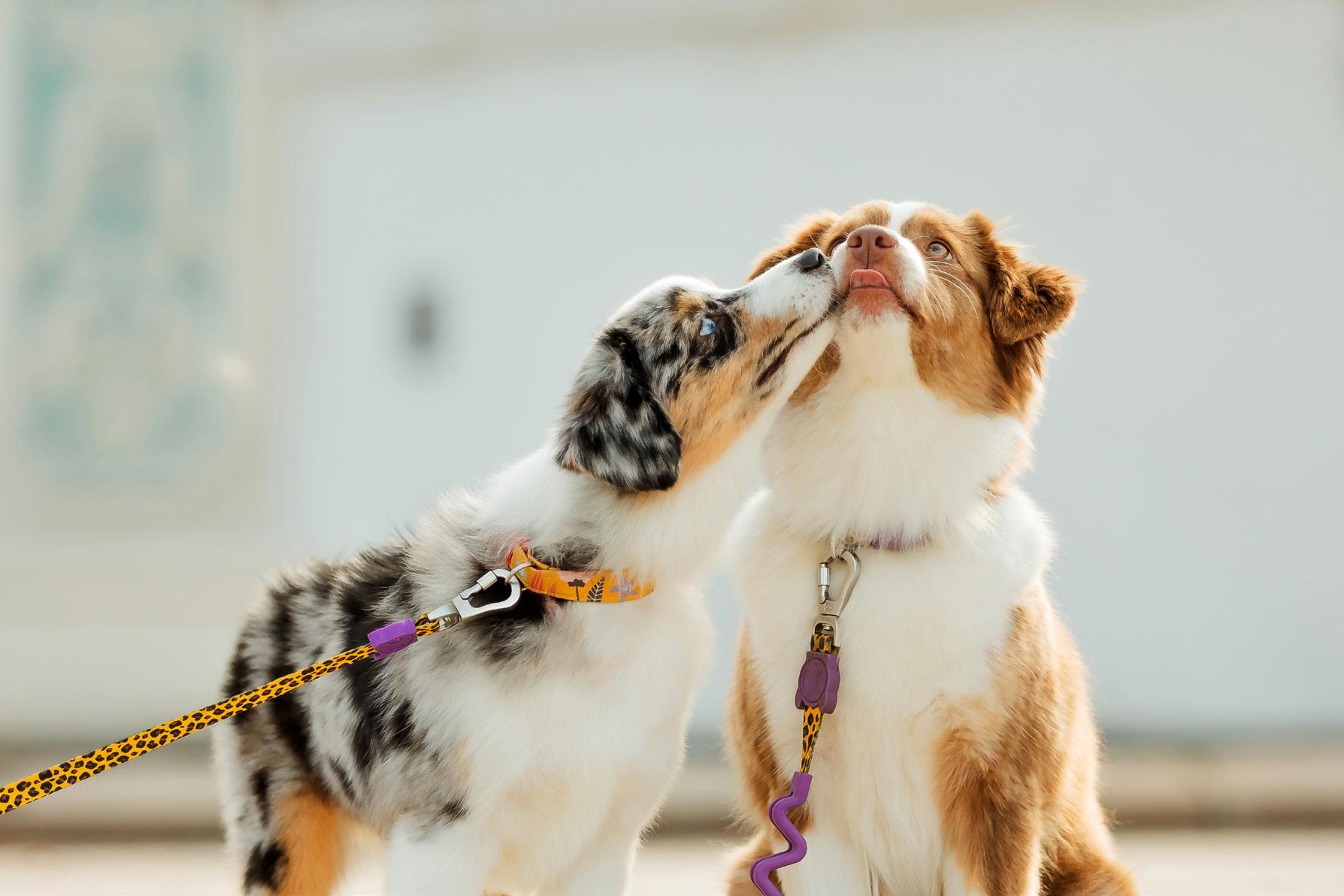
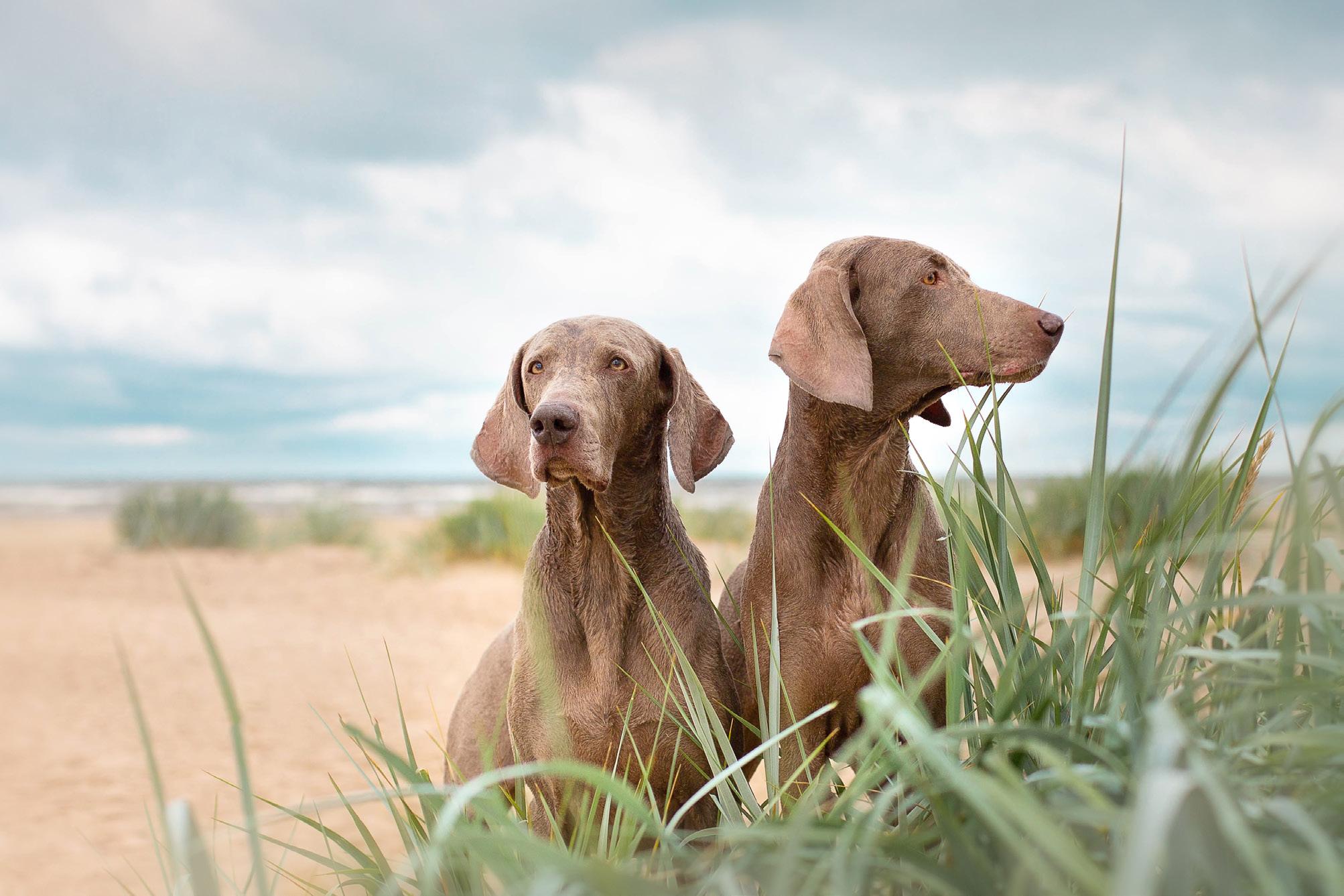
DQ | 5A 32 DOGS AT HOME
HOW MUCH DOES GENDER MATTER?
There are, of course, exceptions to the rule, but generally, gender will play an essential role in whether your new dog will get along with your existing dog. Experts agree that the second dog should be of the opposite sex to your current dog for the best possible chance of compatibility. Even if your current dog is sweet and wellmannered, there is a high chance that she or he will begin to display aggression if a dog of the same sex joins the household. Two males, especially intact males, may fight over toys, attention and affection from their humans. There may also be
some ‘territory marking’ in your home that is difficult to get under control. Similarly, two female dogs will often struggle with dominance issues, resulting in generalized aggression.
Instead, if you put a male and female dog together, the results are usually much better, with less fighting. This is particularly the case if both dogs are neutered.

DQ | 5A 33 DOGS AT HOME

DQ | 5A 34 DOGS AT HOME
REASONS WHY TWO DOGS MIGHT FIGHT:
Fighting between two dogs of the same gender in the household occurs for a number of reasons:
• If the dogs are not neutered, they may try to establish dominance over each other.
• If one of the dogs is larger than the other, the smaller dog may feel threatened and act aggressively in response.
• Another common reason for fighting between two male dogs is simply jealousy. If one dog perceives that the other is receiving more attention from you, he may become agitated and fight.
• It’s important to remember that some dogs simply don’t get along. Like us, dogs have their own personalities and preferences, and there’s no guarantee that two dogs of any sex will be compatible.

• Resource guarding is one of the most common reasons for conflict between two male dogs. This happens when one dog perceives that another dog is a threat to a valuable resource, such as food, toys or even you. Resource guarding can lead to serious fights and even injuries, so it’s important to be aware of this behaviour and take steps to prevent it.
CAN SAME-SEX DOGS GET ALONG?
As mentioned, experts recommend adopting a dog of the opposite sex, but two dogs of the same sex can get along in certain situations. It all depends on each dog’s personality and level of dominance. If you do decide to get two dogs of the same gender, most experts would recommend, however, that you choose a much younger dog than your existing dog. For instance, introducing a male puppy to an older male dog will be less intimidating for the older dog and make him less likely to protect his territory and resources. However, there is still a risk of aggression being displayed as the puppy grows up.
DQ | 5A 35 DOGS AT HOME
a new dog, it’s not the only thing that matters. First, you need to decide if you can take on the responsibility and cost of two dogs – two dogs need twice the level of commitment and twice the amount of money! Secondly, you need to decide how stable your home life is. If you are thinking of moving house soon or are about to welcome a new baby into the family, the timing is definitely not optimal for bringing another dog into the mix. Then you need to consider the level of training of both your dog and the dog you are considering adopting, to understand how easy it will be to work with them together. You also need to consider your dog’s personality – is he friendly towards other dogs, or does he prefer the company of humans? You should also consider the age of your existing
dog. If he is older or suffering from ill health, it is probably unfair to expose him to a younger dog with lots of energy that disrupts his lifestyle. Then you need to factor in breed and temperament. If you have a huge dog, adding a tiny dog is not a great idea and vice versa, and if one dog has low energy levels and the other has high energy levels, this is also bound to create issues.
FINAL THOUGHTS
A second dog can be a great addition to the family, but choosing one requires much thought. Consider your current dog’s needs, personality, temperament and gender when selecting a new dog, and you are far more likely to create best friends for life!

DQ | 5A 36 DOGS AT HOME
FOCUS
The labradoodle, which combines traits of a Labrador Retriever and a Poodle, was created to try and create a hypoallergenic guide dog.
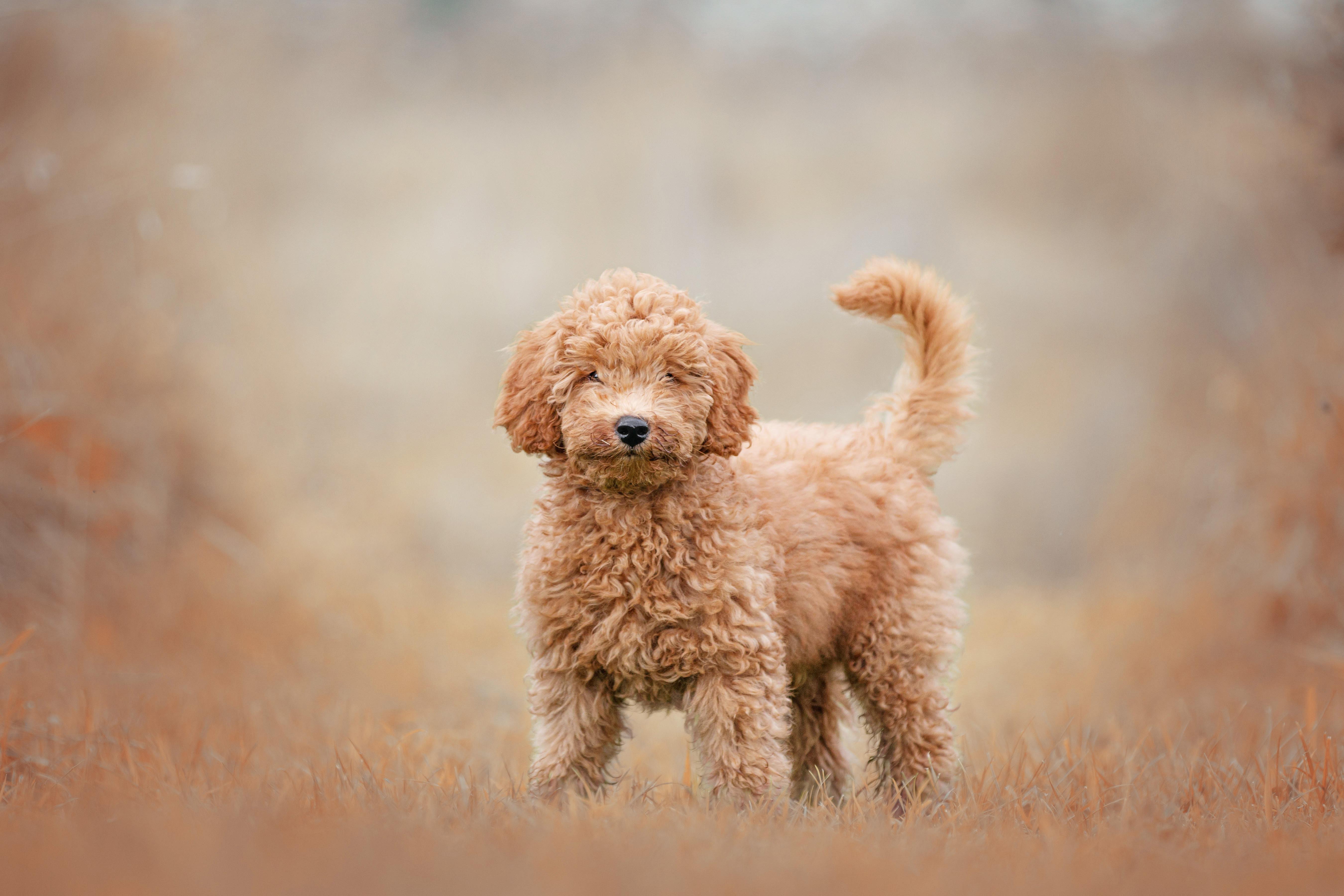

DQ | 5A 37
push-ups PUPPY
INSTILL THE BASICS
DQ | 5A 38 DOGS AT HOME
TEXT: RHIANNON CECIL
Puppy push-ups are a great way to practice all the basic obedience commands and an excellent opportunity for your puppy to show you just how clever he is. This sequence has been around since the 1980s, and since there are a few variations out there, we will be exploring the full set of moves. All dogs can perform this sequence; some just take more time than others.
WHAT ARE PUPPY PUSH-UPS?
If you are new to this term, don't fret; puppy pushups are not a way to get your puppy nice and buff and ready to strut his stuff on the beach or at the local park. Instead, puppy pushups are a sequence of obedience moves intending to familiarise him with the three cornerstones of basic obedience — sit, down and stand.
Puppy push-ups are also a great way of refreshing basic obedience for dogs of all ages! So, while puppy push-ups are fantastic for young dogs to learn the ropes, you can use the format for older dogs, too, to make sure they are still comfortable following basic commands. If you've taken on an older dog with no prior training, puppy push-ups are a great place to start. Dogs catch on very quickly when it comes to learning new things, especially if getting it right results in some kind of positive reinforcement.

DQ | 5A 39 DOGS AT HOME
HOW TO TEACH PUPPY PUSH-UPS
To effectively teach your puppy these moves, they need to be able to recognise that they are all separate and individual commands. You don't want him getting confused and thinking that 'sit' means 'down' and vice versa or that 'sit' means he needs to carry out the entire sequence.
To keep things separate, ensure your dog understands the first command before moving on to the next. In the beginning, reward your puppy after he completes each command in isolation. Once he has the hang of

it, you can ask him to go through all the commands and then reward him at the end. You want your puppy to respond to your commands whether there is a treat up for grabs or not, so as he starts to get it right, you can change up the reward with another form of positive reinforcement, such as a scratch behind the ear, or a vocal command expressing how proud of him you are. To start with this exercise, you only need three things:
• Your puppy
• Some tasty treats
• A pinch of patience
DQ | 5A 40 DOGS AT HOME
LET'S BEGIN THE TRAINING!
Now that you have gathered your supplies let's go through the basic gestures and commands.
1. Sit command
The 'sit' command is the first obedience command we like to teach to all of our newcomers. The purpose of this command is to get your dog to sit and focus on you. It is normally followed with another command, such as stay or heel. Generally, we like our dogs to sit and heel on our left-hand side, but for this exercise, and to make things easier, you can position your puppy in front of you. How to do it:
1. Start with your puppy standing in front of you or on your left-hand side.
2. Place a treat in front of his nose.
3. Slowly pull your hand up and make a small arc above his head towards his tail.
4. As your puppy's head goes up, he should plop his bum on the floor.
5. As his bum hits the floor, say the command 'sit' and give your puppy his hard-earned reward.
6. If this is your first time practising this move, it might take a few tries to make it work.
After completing this exercise, you may have noticed that you are communicating with your puppy in two ways - a hand gesture and a vocal command. It's nice to teach your dog both commands, as each command works better in different situations. Once your puppy has the hang of it, try the sit gesture without a treat by raising your hand in front of your dog's face, palm facing up. Now try the vocal sit command and see if your dog sits. Don't forget the positive reinforcement when he gets it right.
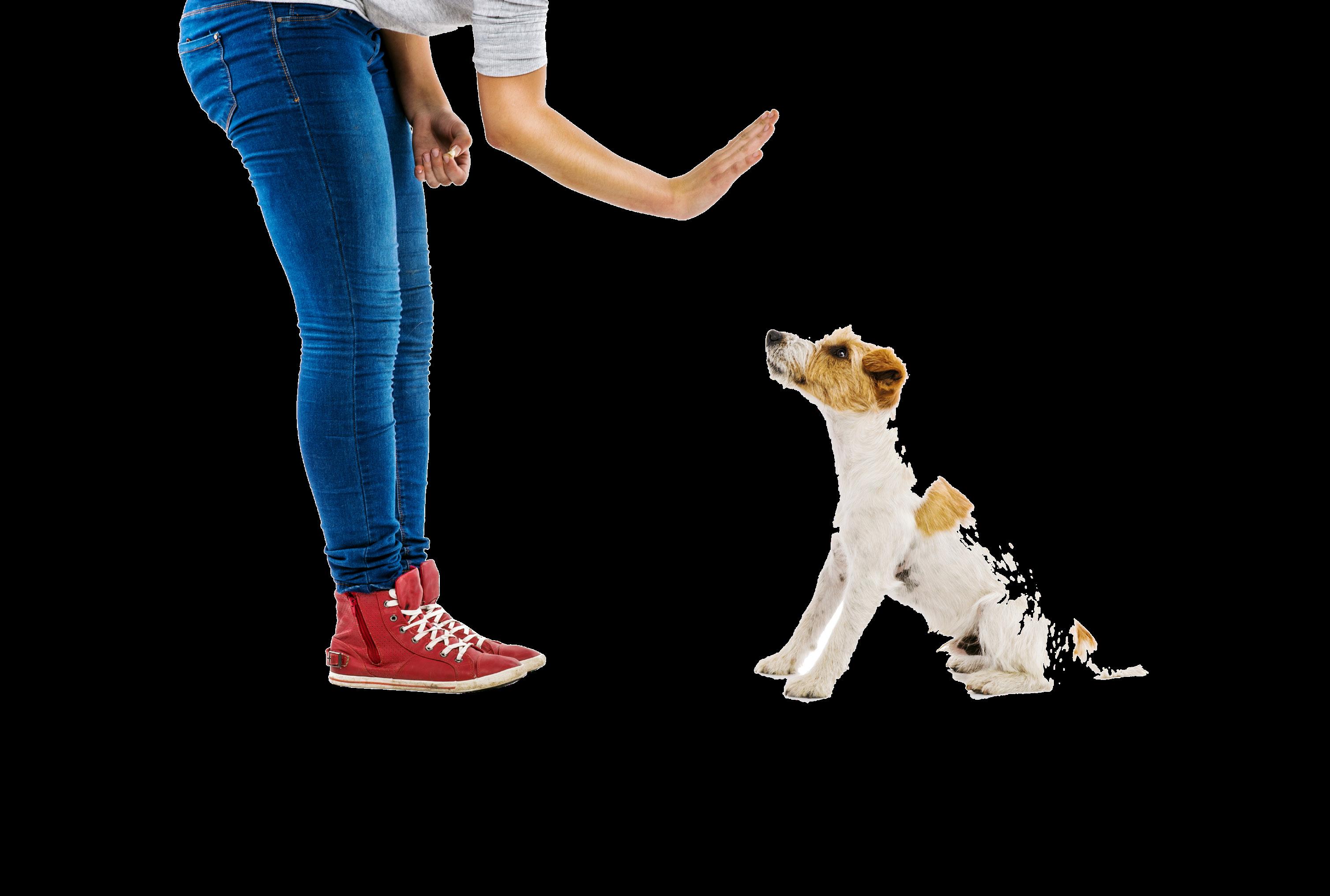
DQ | 5A 41 DOGS AT HOME
2. Down command
The 'down' command teaches your puppy to lie on his tummy and should not be confused with "get down off the couch." You can teach the 'down' command from the sit or stand positions, but for this exercise, your puppy will be sitting.
The 'down' command is pretty difficult to pull off at first. It is important to gain your puppy's trust and make him feel safe in order to lie down effectively, and treats are a great aid in achieving this mindset. How to do it:
1. Have your puppy 'sit' in front of you, or if you are more experienced, you can have your puppy sit on your lefthand side.
2. Make a loose fist and place the treat deep inside your closed hand, towards your pinky finger.
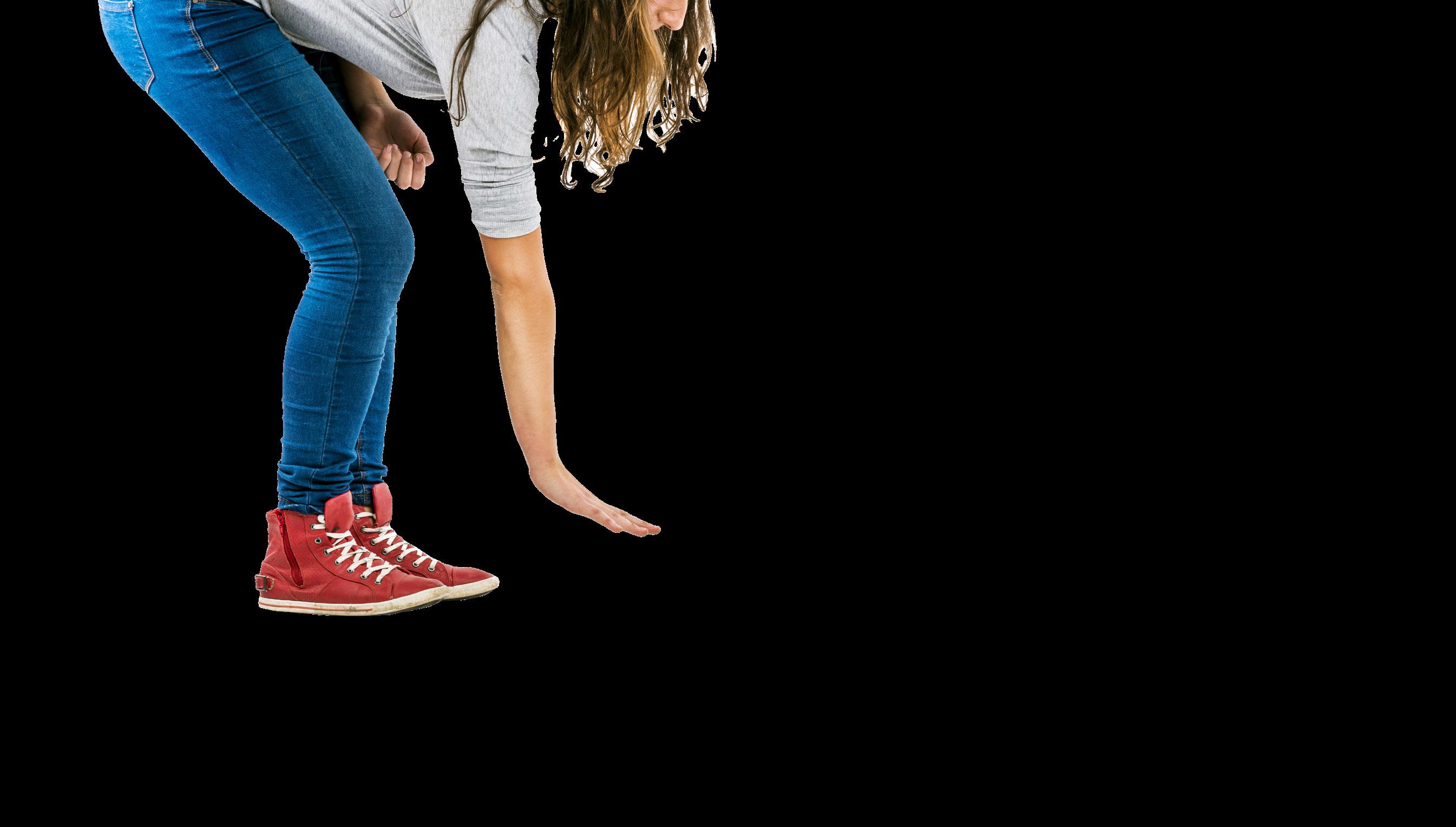
3. Place your hand in front of your puppy's nose and let him sniff out the treat.
4. He will want to stick his nose inside your loose fist and start trying to get the treat out with his tongue.
5. At this point, lower your hand under his chest and between his legs. He should begin to lower his body.
6. Once he starts to lower his body, pull your hand towards you slightly and place your fist between his front paws, he should go into the 'down' position.
7. He should still be trying to retrieve the treat from your closed fist, which should be full of drool by now.
8. Once your dog has fully lain down, you can give the verbal command 'down' and release the treat as his reward. Once your puppy gets the hang of it, and yes, it might take a few tries, you can try using just the hand gesture and then the verbal command, so he knows both. The hand gesture for the 'down' command is achieved by showing your puppy an outstretched, open flat hand, with your palm facing down and lowering it to about 45 degrees. Make sure to separate the 'down' and 'off' commands and use them appropriately, as you don't want your puppy to get confused.
DQ | 5A 42
DOGS AT HOME
3. Stand command
The 'stand' command is not an often-used signal, but it is great for getting your pup to stand during veterinary trips or grooming. Also, it’s great if you want to show your dog in a competition. In this exercise, you will ask your puppy to stand from a sitting position.
If your puppy is still in the 'down' position, you can get him to sit again by simply placing a treat in front of his nose and pulling your hand in an arc above his head and towards his bum. This is very similar to the 'sit' from stand command we practised earlier.
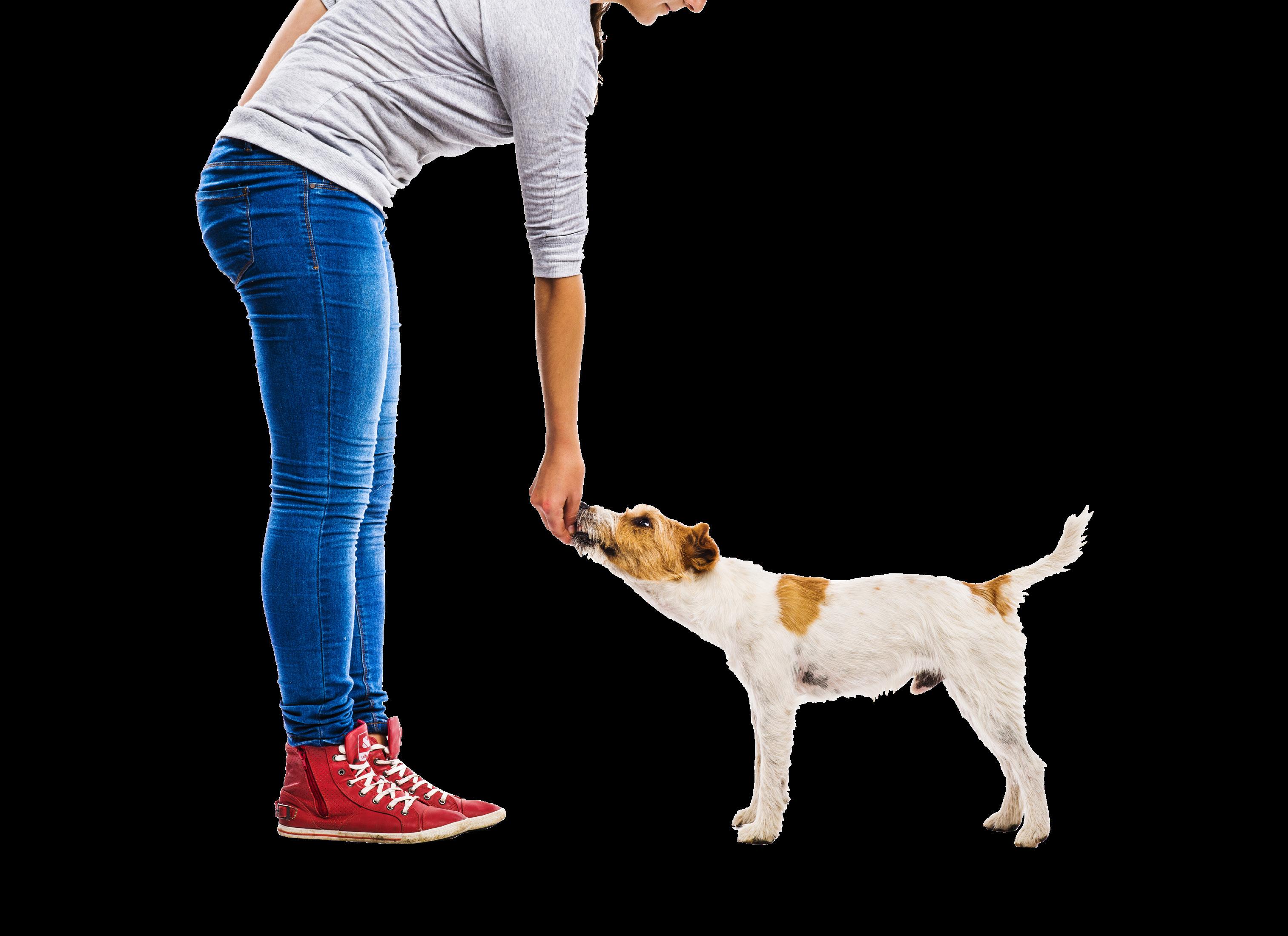
How to do it:
1. Have your puppy sit in front of you.
2. Place a treat in front of his nose.
3. Slowly pull your hand away from his nose, in a straight line, towards your body.
4. He should begin to move his head forward, attempting to get the yummy treat.
5. Keep moving the treat backwards until he lifts his bum off the floor and stands.
6. As soon as your puppy achieves the stand position, give the command 'stand' and reward him.
The hand gesture for the 'stand' command may take some getting used to for both parties. Place your hand at your side, palm facing forward, and fingers pointing down. Pull your hand straight back behind you in a sharp motion. Once your puppy gets it, he will be able to stand for every occasion.
DQ | 5A 43 DOGS AT HOME
PUTTING IT ALL TOGETHER
Once you've taught your puppy these three basic commands, it's time to practice puppy push-ups. The aim is to get your puppy to sit, go down, sit again, and then end with a stand. Each movement needs to coincide with a hand gesture or verbal command, and only once your puppy has completed a command can you move on to the next.
This is a great way to practice all these obedience commands in one go. If your puppy is totally rocking these push-ups, take it one step further by changing
the order of the commands. Remember that when your puppy has really understood the exercise, he will be able to 'stand' from lying down or from sitting. The same goes for the 'down' command, except that he needs to be sitting or standing.
Once you get the hang of it, puppy push-ups will be your go-to for refreshing your puppy's training, plus it has the added benefit of being mentally stimulating! Basically, there's nothing not to love about this mini routine.

DQ | 5A 44
DOGS AT HOME
Dogs can help conservationists find and protect endangered species using their super-powerful sense of smell.


FOCUS DQ | 5A 45
TEXT: RHIANNON CECIL
RING THE BELL

Dogs are so intelligent; they can learn tonnes of different tricks! In this issue, we look at teaching your dog to ring a bell when he wants to go outside. Amazing right? How cool and convenient would it be if your dog had a mechanism where he could effectively communicate his needs?
This fun and useful trick is excellent for people who live in cities and apartments where their dogs don't have free rein to nip into the garden when they need to. You can teach this skill to new puppies or mature dogs, and with a little patience, your best buddy will be ringing that bell in no time.
WHY TEACH YOUR DOG THIS TRICK?
Teaching your dog to ring a bell whenever he wants to go outside is a fun and effective twist on house training. It covers a wide range of skills, including enabling your dog to cross the language barrier and communicate in a way everyone can understand.
Teaching your dog skills is essential to sharpen their minds. Think of the early days of their puppyhood as the development phase of their upbringing. Focus on teaching him a wide variety of skills. It will give him excellent manners as he matures, which means better integration into our suburban lives.
DQ | 5A 46 DOGS AT HOME
TRAIN YOUR DOG TO RING A BELL WHEN HE WANTS TO GO OUTSIDE
WHAT WILL YOU NEED FOR THE TRAINING?
Now that you have decided to embark on this challenge, here are the supplies you need to 'bell train' your pooch. With these essentials, the training will be even more enjoyable for you both. You will need the following:
• A touch target: This can be a milk bottle lid or something similar in size.
• A bell: Electronic chimes would be ideal, but a good old-fashioned bell tied to the doorknob will work just fine. The bell must hang low enough so your dog can reach it with his paw and be loud enough that you can hear it from anywhere in the house.

• Training treats: For tricks like these, it's always a good idea to bring out the extra special treats.
• Time for training: Although this isn't a particularly difficult trick to pull off, you must set a routine. Choose times when your pup is more likely to do his business.
• Verbal commands: Choose a command and stick to it, for consistency's sake. Get as creative as you like but make them easy for your dog to remember. The verbal commands you will need:
• A command to sit.
• A command to touch.
• A command to tell you he needs to go outside.
DQ | 5A 47 DOGS AT HOME
By teaching your dog this trick, you will particularly practice the 'sit' and 'touch' commands. If he's unfamiliar with the individual aspects of this trick, break it up into stages. You don't want to overwhelm your willing student with too many unfamiliar commands.
The next part is split into two sections; the first covers teaching your dog to ring a bell, and then we progress to making the association between ringing the bell and going outside.
Gather your supplies to begin your training, and remember to enjoy the process. In no time at all you’ll have a housetrained genius!
TRAIN YOUR DOG TO RING A BELL
The first part of this trick will teach your dog how to ring a bell. You'll ask your dog to sit by the bell and touch his paw to it to make a noise. Dogs do a lot of communicating with their paws, and we just need to refine this natural behaviour and turn it into a habit. First, we will teach our pup to touch his paw to an object and then associate it with ringing the bell.
TEACHING TOUCH
The touch command is a classic skill to teach your dog. It allows you to do a whole range of things like high-fives, touch specific objects and push buttons. Once you nail the touch command, this trick will become a whole lot easier to perfect.

1. Take your touch target and place it in front of your dog on the floor.
2. Wait for him to show interest; he should start to paw the target.
3. Immediately, as he touches the target, give the touch command and praise him heavily.
4. If he does not paw the target, tap on the target with your fingernail.
5. Repeat this until he understands that touching the target with his paw results in a reward.
6. Now try moving the target to another place in the same space and ask him to touch it.
7. If he touches the target, he is really starting to get the hang of it. If not, keep calm and try again.
DQ | 5A 48 DOGS AT HOME
RINGING THE BELL
Now that the touch groundwork is done, it is time to ring the bell!
1. Stick the target on the chime button or on the bell itself.
2. Have your pup sit within paw's reach of the bell.

3. Ask him to touch the target so that it makes a noise.
4. When the bell rings, get excited, and praise and treat him with as much enthusiasm as you can muster.
5. If he doesn't immediately understand that he needs to touch the bell to make a noise, show him by ringing the bell yourself.
6. Repeat until he understands that touching the bell plus the noise results in a yummy treat and some praise. It may take your dog a few days to grasp the concept. Keep consistent with your training, and soon he'll associate ringing the bell with his reward. At this point, your canine friend is one step away from becoming a house-trained master. Now it's time to associate ringing the bell with going outside.
DQ | 5A 49 DOGS AT HOME
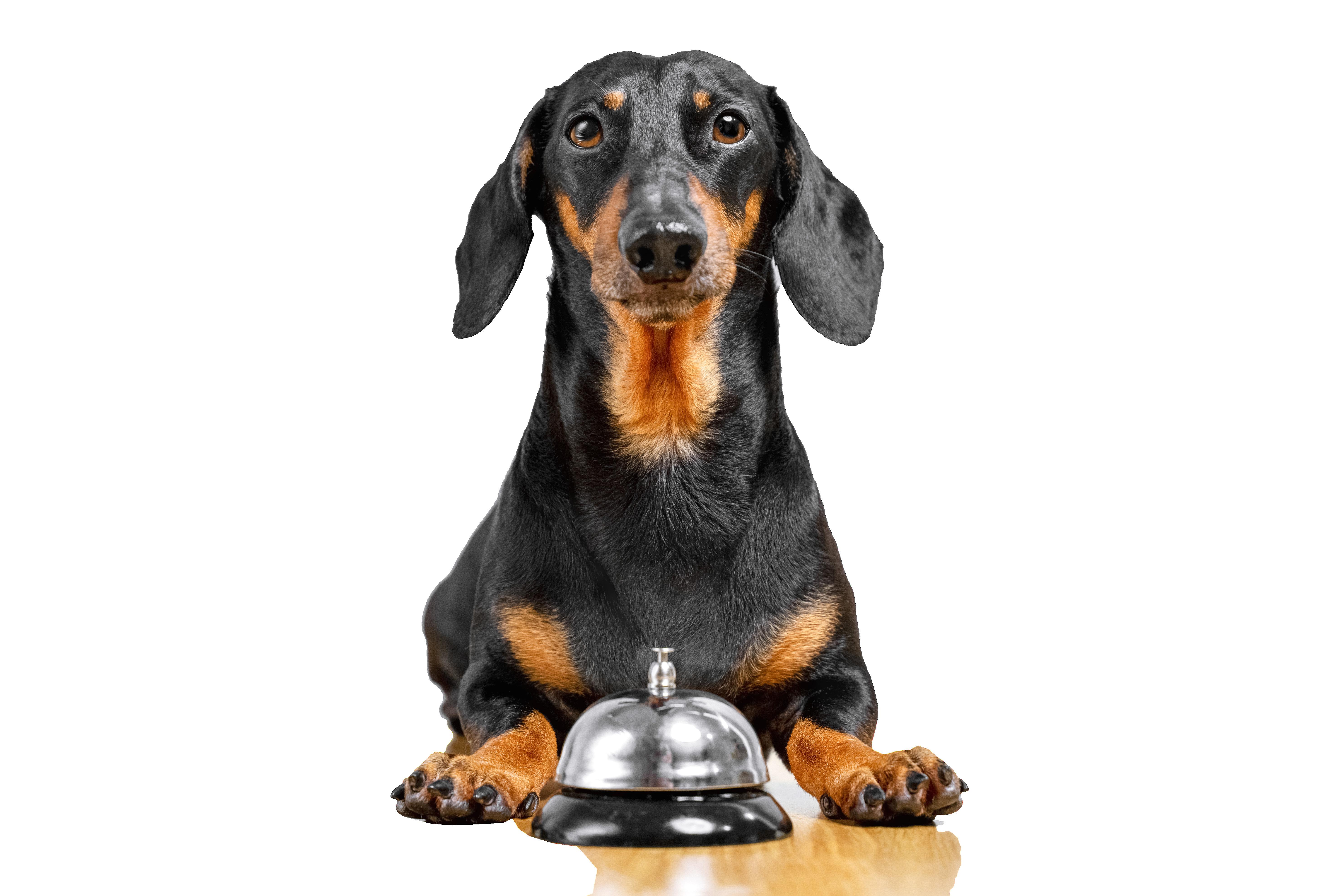
PRO TIPS!
Are you experiencing some frustration while teaching your dog a new trick? Try these tips to reinvigorate your training sessions.
• Pause the training session: Distract yourselves for a while and resume the training with a fresh mind.
• Give your dog a confidence boost: Ask him to do something he is already good at, even if it is the 'sit' command. Reward him heavily and let him know how clever he is.

• Give him tons of positive reinforcement. Show him how much you appreciate his contribution towards the lessons. Use a kind and friendly demeanour, show lots of patience, and provide yummy treats!
• Keep the training sessions short: Start with 5-10 minute training slots to avoid him losing focus, and gradually increase the time as he improves.
• Exercise your pooch before training sessions. Getting rid of his excess energy will help him to focus more in training.
FINAL THOUGHTS
It truly is amazing how clever these animals are. With a bit of time and patience, you can teach your dog almost anything. Now that he knows the touch command, you can take it a step further and teach him how to switch the lights on and off, open doors and give doggy high-fives. We hope you enjoy teaching your pooch this neat trick!
51
DOGS AT HOME

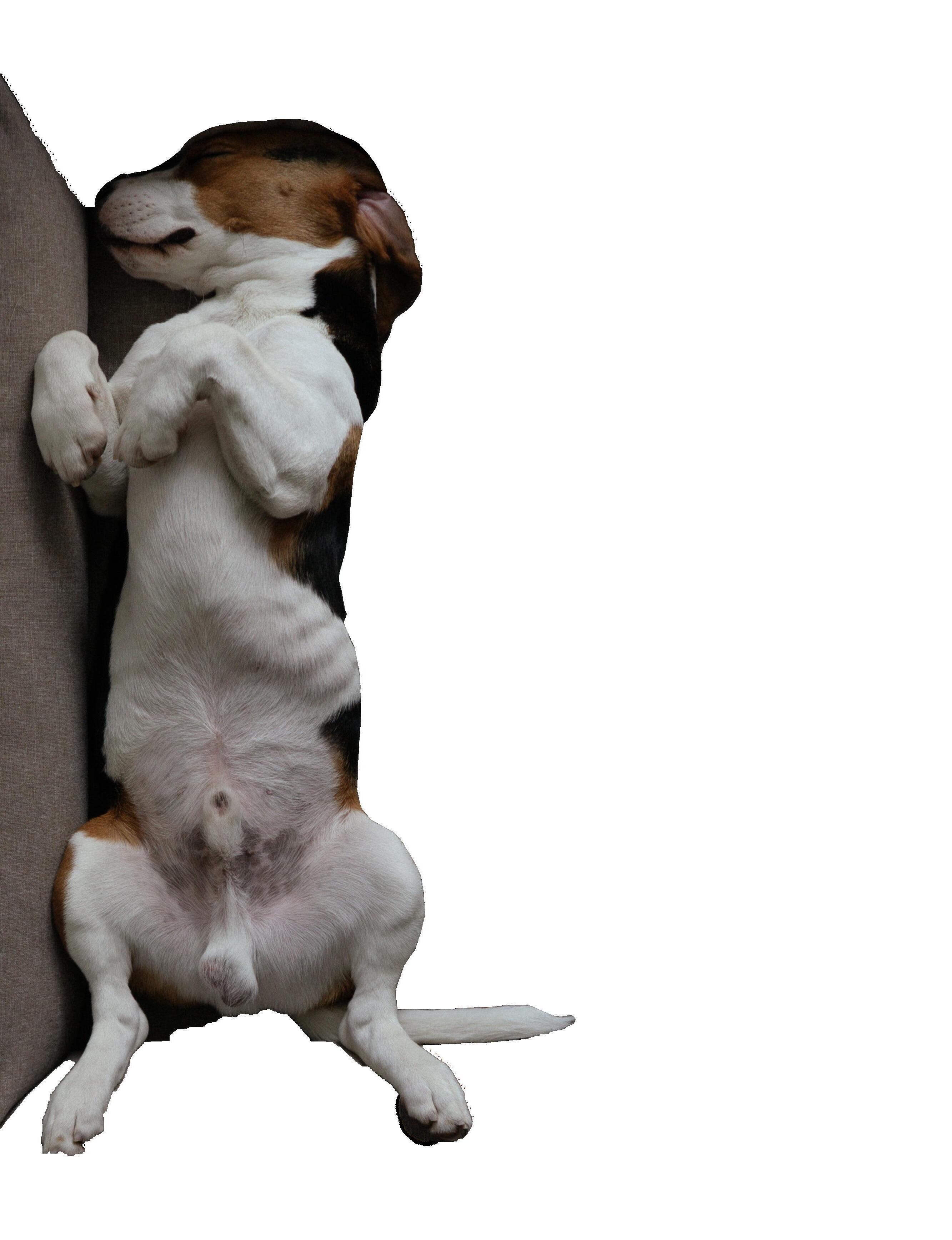
DQ | 5A 52
We tend to put a lot of time and effort into finding the correct bed and mattress for ourselves, but often don’t think twice about what our companions are sleeping on. There are so many shapes and sizes of dog beds out there it really can be tough choosing the correct one. And, whilst all companions can benefit from having a decent bed to sleep on, the choice becomes even more challenging when you have a compromised dog. If you think about the importance of correct spinal alignment in humans and how any compromise in this alignment can severely affect us, considering this same alignment in our companions makes good sense.
1. SIZE OF THE BED
The first factor to consider is the size of the bed. A bed that is too small will mean that, depending on your companion’s size, they will be unable to stretch their legs or body out. Sleeping crammed up and being unable to stretch out is not fun for anyone, so a bigger bed is always better. Basically, don’t expect your Labrador to rest comfortably in a bed designed for a Jack Russell, even if they look cute, curled up in a little ball and bulging out on all sides!
2. SIZE OF THE BED
The second factor to consider is the shape of the bed. Beds come in so many shapes, most designed to look cute and appealing, but these can often be uncomfortable and impractical for your dog. One also needs to consider whether the bed has high, hard sides, which many of them do. Some companions like using these sides as a pillow, but there still needs to be space to stretch out and lie flat when they choose to. Rectangular or square beds are generally a better choice as your companion can stretch out in all directions. One can build some height with a smaller pillow or blankets if your companion likes a softer headrest.
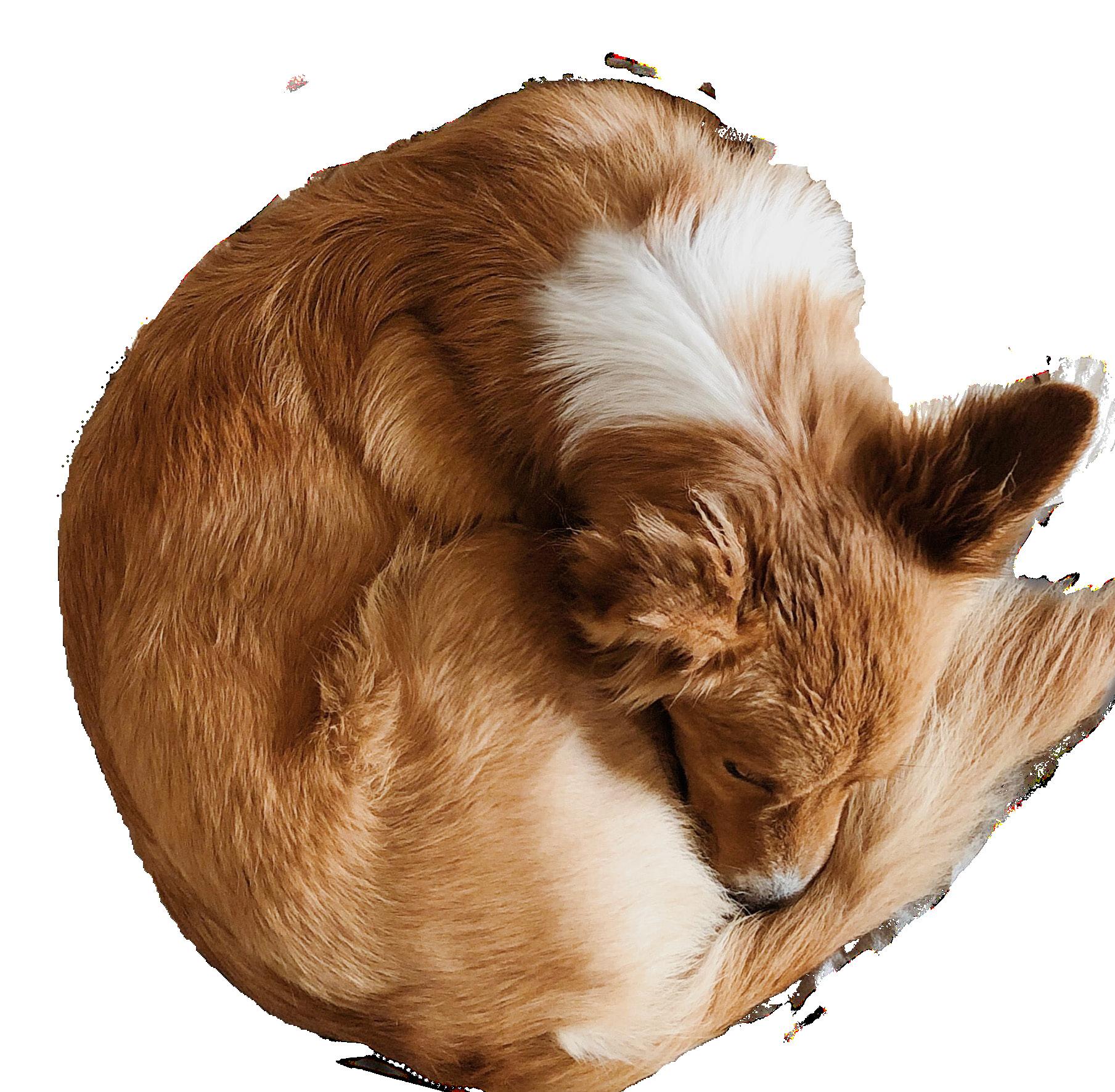
DQ | 5A 53
3. HEIGHT OF THE BED
The third factor to consider is the height of the bed. This one is important for companions who struggle to step up or over objects as they must climb into the bed or step over a lip to get in. High beds also require your companion to step or jump out, which can put a strain on a compromised animal. A flat bed on the ground is best as your companion can climb on the bed from any side, and it’s not a high step up. Some of the round beds also have a lower entrance portion, but your companion does not always remember to use it, which could lead to tripping or a fall. There are a lot of companions who sleep on their human guardian’s bed. In this case, teaching your companion to use a ramp or steps, or even just an ottoman they can step down onto first, is so important. There is high impact and strain on your companion’s joints when they jump off a bed. This is even worse for an already compromised companion. Jumping on a high bed is equally risky as there is always the possibility that your companion may misjudge and end up falling or twisting something. A great deal of strength is required to propel oneself from the ground onto a bed, and again, for a compromised companion, this is not a good idea. All companions, especially the small breeds, should be taught from a young age to use a ramp or steps onto beds and couches.
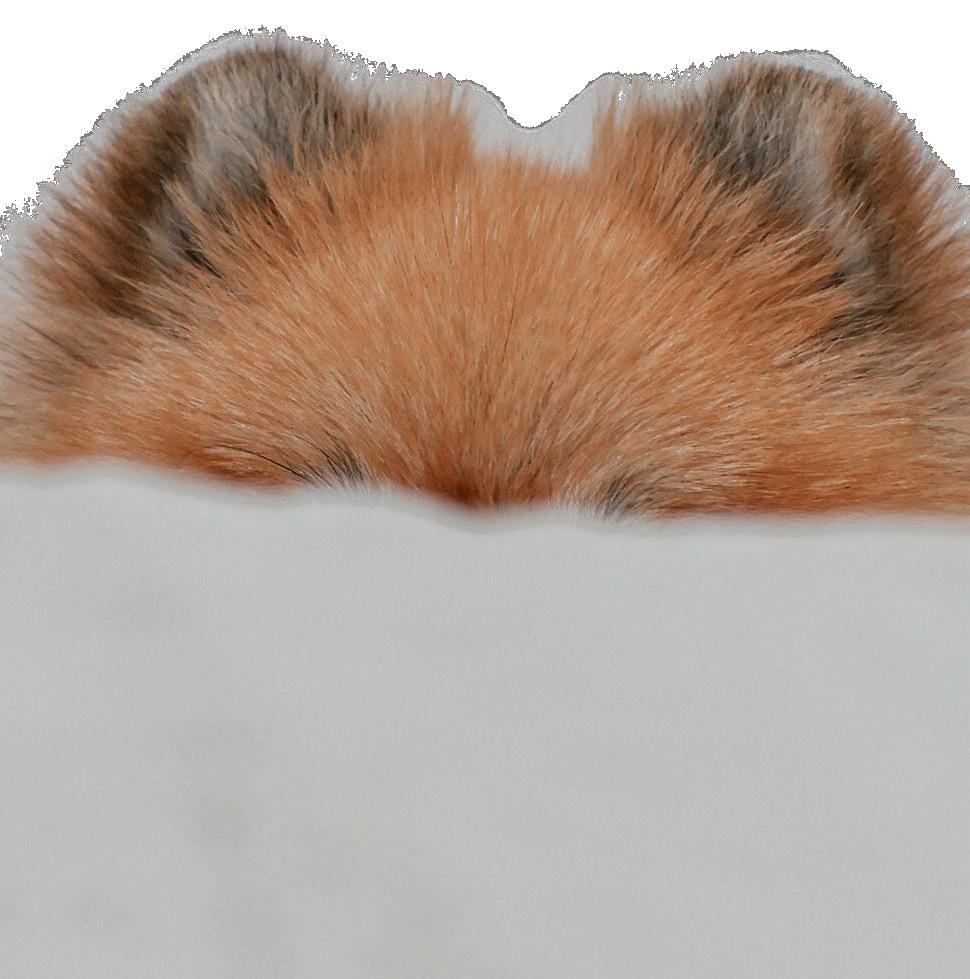

DQ | 5A 54
4. FIRMNESS
The fourth and most important factor is the firmness of the bed. As we know, a bed that is too hard is uncomfortable, but so is a bed that’s too soft. When a compromised animal has to walk on a soft, unstable surface, it can be sore and scary as they will struggle to keep their balance and may end up collapsing or being reluctant to use the bed. As cute and comfy as these big, poofy beds look, they can often be difficult to navigate and squash down to just about nothing when weight is placed on them, which makes them uncomfortable. These beds will usually also not have a firm, consistent surface, much like a lumpy mattress, leading to discomfort when trying to sleep. A hard bed with minimal cushioning or give will also be very uncomfortable, even painful, for your companion, especially for the oldies who usually have bones that aren’t as well covered as they used to be. Your companion can also get bed sores if lying on a hard surface for most of the day. This is an important point to remember for our paralysed companions who cannot turn and readjust themselves. These companions will not only need to be regularly turned, but will need to be on a cushioned, supportive surface.

DQ | 5A 55
FINAL THOUGHTS
Many of our companions choose to sleep straight on the floor; this is usually linked to them getting hot, but it may also be that the other bed options available are uncomfortable or impractical, so try a new type of bed to see if that changes anything. We always recommend orthopaedic beds and mattresses to our clients as their companions are compromised and need the best support and comfort. Look for flat beds that don’t have high rims that make entering and exiting the bed a challenge. Make sure the bed is not too hard or soft. Ultimately, a good bed should improve your companion’s quality of life and comfort, much the same as with us!

ANIMAL HEALTH AND HYDRO RYNFIELD

154 President Brand Str, Rynfield, Benoni
Contact: 083 230 2188
Email: animalhealths@gmail.com
ANIMAL HEALTH AND HYDRO PRETORIA EAST
218 Mark St, Grootfontein County Estates, Pretoria East, Grootfontein Country Estates
Contact: 074 251 4410
Email: ahahpretoria@gmail.com
56
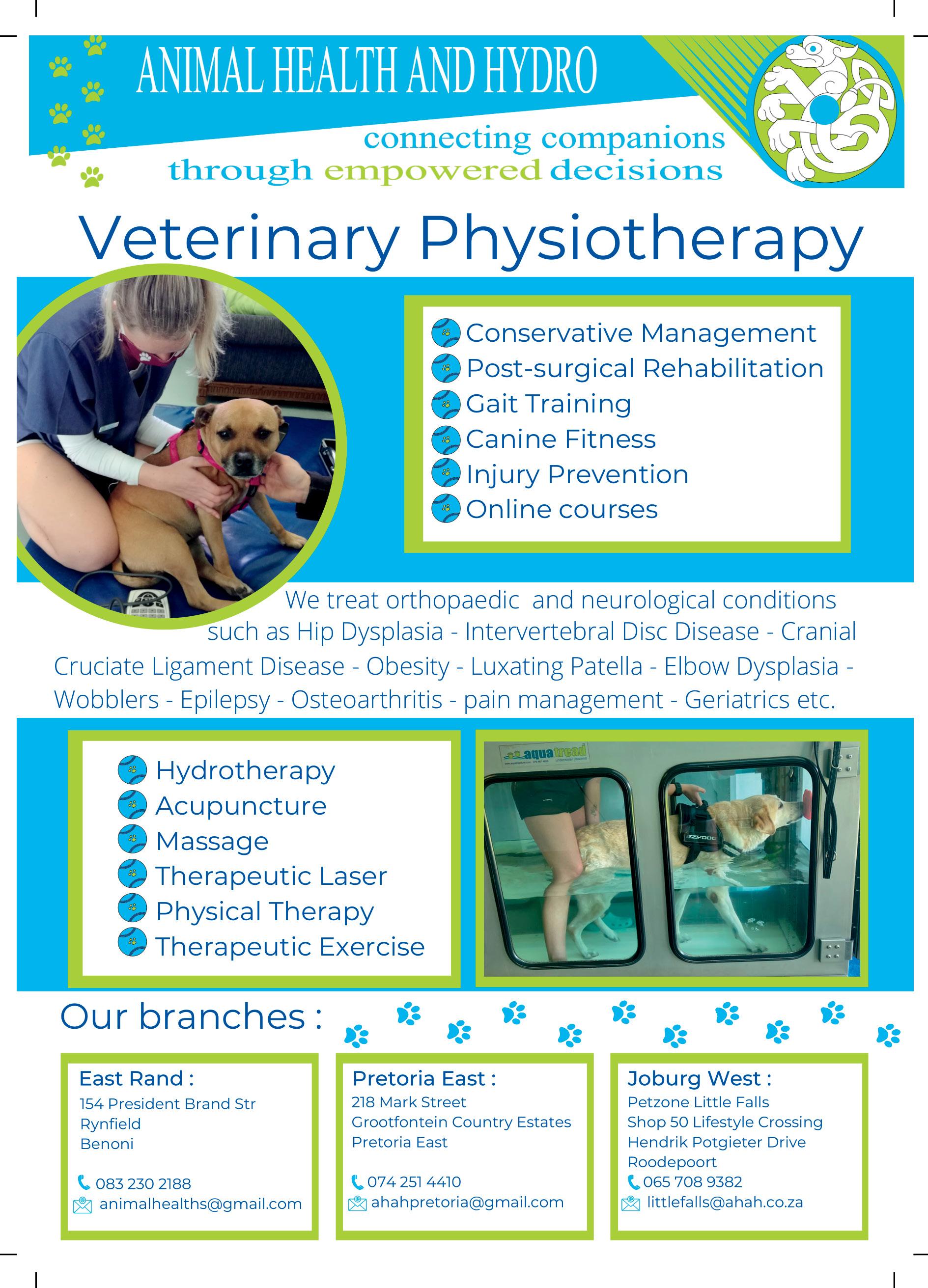
IT’S MINE
RESOURCE GUARDING IN DOGS

Resource guarding is when dogs become defensive to keep others away from something they perceive as valuable. It is perfectly natural for dogs to want to protect their food, their toys or their bed. After all, these are valuable resources for a comfortable life! However, if dogs think their access to these resources is being threatened, they can become overprotective and even display dangerous behaviours.
Some contributing factors to resource guarding include:
• Issues with early socialization
• Deprivation of resources (at any stage of life)
• Breed and genetics
• Fear and anxiety
• Frustration
DQ | 5A 58 DOG BEHAVIOUR
SIGNS OF RESOURCE GUARDING IN DOGS

Some common signs of resource guarding include:
• Eating very quickly
• Running away with a resource, like food
• Hovering around resources
• Stiffening or staring at a perceived threat to their resource (human or animal)
• Growling
• Snarling
• Lunging
• Snapping
• Biting
Many dogs who resource guard have a generally more fearful nature. This means that when a resource is threatened or may be threatened, they are more anxious to protect it than they need to be.
DQ | 5A 59 DOG BEHAVIOUR
RESOURCE GUARDING BETWEEN DOGS
Resource-guarding behaviours are commonly directed at other dogs, particularly those living in the same household. Pets should never have to compete amongst themselves for resources, so ensure that you do everything possible to avoid situations where access to resources is limited, and ‘sharing’ would be required.
Some tips to prevent resource guarding in multi-dog households include:
• Carefully watch for signs of resource guarding in any of your dogs
• Make sure there are more than enough toys and sleeping spaces so each dog has a place where he can go.
• Always feed dogs separately to each other, and don’t leave food out
• Prevent access between pets while they are consuming or engaging with high-value items.
DOG TREATING YOU AS A RESOURCE
As you provide love, attention and food, you can become the resource that your dog is trying to guard. Watch out for these signs:
• Attempting to block other dogs or people from approaching you
• Showing signs of stress like lip licking, whale eye, panting, etc., when someone else or another dog approaches you

• Raised hackles, growling or snapping when someone else or another dog is near you
If you suspect your dog is resourceguarding, seek help from a professional, rewards-based trainer or behaviourist.

DQ | 5A 60 DOG BEHAVIOUR
NOTE
Other family members including children may make your dog anxious if he sees you as a resource. Be very careful not to leave small children alone with dogs and keep an eye out for any signs of aggression that your dog shows to others in the home.
Top tips for handling this issue include:
• Work on building your dog’s confidence so that he is happy to be a little more independent and is less reliant on you.
• Spend quality time with each pet in the household.
• Don’t carry a dog around or constantly hold your dog, as this can cause greater separation anxiety and resource guarding.
Please note that when you are the resource your dog is protecting, you must be careful that the situation doesn’t escalate to aggression. You do not want to be in the middle of a fight!
PREVENTING RESOURCE GUARDING IN ALL ITS GUISES
The best protection against resource guarding is to set up a comfortable, safe and happy environment for your dogs.
Here are some top tips for stopping and managing resource guarding:
• Make sure your dog has plenty of space, time, privacy to eat and somewhere of his own to sleep and rest. If you optimize the environment, resource guarding is less likely to present.
• Watch your dog’s body language so that you can spot signs of trouble early on.
• Keep a distance from your dog when he’s engaged in playing with toys, consuming food or sleeping.
• Don’t confront your dog to try and remove the item he is guarding, and certainly don’t remove it from his mouth. This is very likely to precipitate aggression!
Ultimately, it all relies on creating a secure and comforting environment for your dog, so everyone stays safe and happy. If you do this, issues with resource guarding should reduce. However, this is a complex behavioural issue, so contact a trainer or behaviourist if the problem isn't going away or your dog is aggressive.

DQ | 5A 61 DOG BEHAVIOUR

DQ | 5A 62 DOG BEHAVIOUR
At Harvard University, researchers have been investigating canines' ability to understand human non-verbal communication by getting humans to either gaze at, point to, tap or mark one of two boxes containing a treat.

They tried this experiment with primates who didn't initially understand the activity but, over time, learned what the signals meant. The researchers also tried it with wolves brought up by humans, who generally performed poorly on the test. However, fascinatingly, puppies at just a few weeks old immediately understood what the human was telling them and went straight to the reward time after time.
Many of us will know that our dogs use gaze direction to communicate their needs to us. For example, dogs that gaze at the water bowl because it's empty or look at the toy basket to signal they are ready to play are using their eyes to communicate their wishes to their owner.
Yet, what makes this research so fascinating is that domestic dogs are not only able to interpret this behaviour in their own species, but also have a very specific ability to understand human 'language'. They watch us far more than we realise in an attempt to understand our body language, voice inflexions, the meaning of our words and intent behind our actions. Through this, they understand our way of communicating and have realised that we use gaze direction – just like them – along with pointing and tapping to communicate. This research confirms what many of us already know – interspecies communication is not only very possible but can also be highly sophisticated.
DQ | 5A 63 DOG BEHAVIOUR
TEXT: RHIANNON CECIL
SEVEN GAMES
TO INCREASE CANINE MENTAL STIMULATION
Studies have shown that dogs are more intuitive than we think. They can read people's faces, pick up on our moods and even develop counting skills. When dogs get bored, they begin to make up their own games, which often involve destroying your belongings. So, why not engage in mental stimulation games with your pooch? You're likely to find they enrich your relationship and create a more relaxed and obedient best friend.
Just think about how much calmer your dog is after going on a nice walk once he's been allowed to sniff around, explore, and engage his mind. Plenty of games you can play in the comfort of your home will provide the same mental stimulation. Your four-legged friend will reap massive benefits from just 30 minutes of daily play. If this sounds like a lot, you can always split playtime into two shorter sessions.
Take a look at our top seven mental stimulation games. It's oodles of fun to watch your dog learn and master these little puzzles, and in time, you'll notice his manners and attention span get better too. Once you get the hang of our suggestions, the sky's the limit. You can make up as many of your own games to play as you'd like.
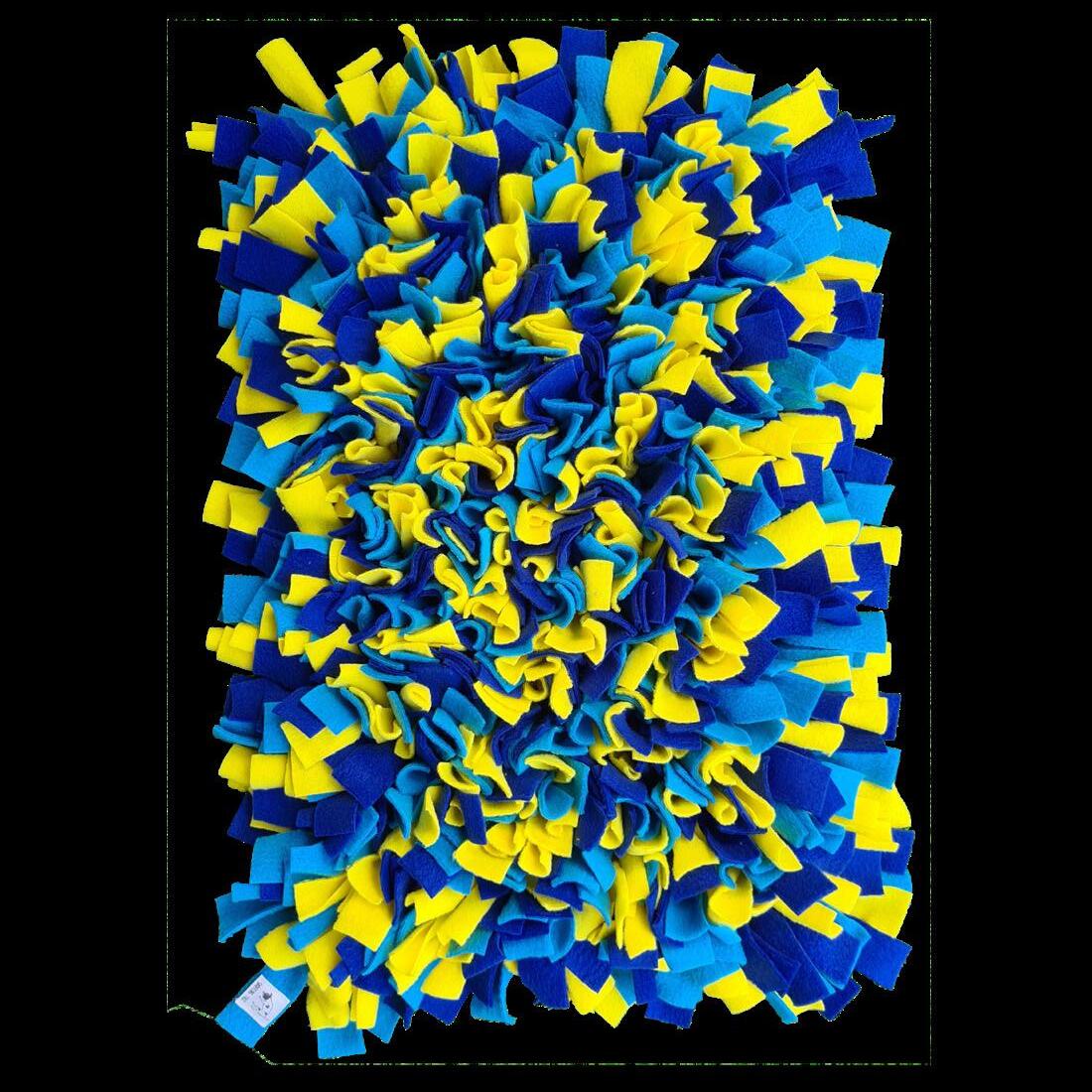
1. FIND THE TREATS
Find the treats is great fun, especially around feeding time. Start by hiding kibble or treats around the house or garden. Your dog must rely on his sense of smell rather than his eyesight and sniff out the hidden treasures. Start slowly by hiding your treats in easy-to-reach places. Give your dog a simple command, like 'search', and watch him figure out the object of the game.
You might have to help him out a little initially, but once he gets the hang of it, you can slowly increase the difficulty. Give him more of a challenge each time to keep him entertained.
DQ | 5A 64 DOGS AT PLAY
2. WHICH HAND?
This is a simple game you can play at any time. Grab a treat, and start by showing your dog it's in your hand. Close your fist and ask him, 'Which hand?' If he paws at the correct hand, open your hand and give him his reward. Like all new tricks, it may take a while for him to figure out what's happening, and he might get so excited he misses the point completely. Stay calm — this is supposed to be fun. You must also stay consistent, and only give him his treat if he paws at the correct hand. If you find he's too excited to play, try again after a nice long walk when his mind is a bit calmer.
3. LEARN NEW TRICKS
This one may sound obvious, but it is a wonderful way to teach your dog new things, stimulate him mentally, and boost his confidence. There's no end to the tricks you can train your dog to perform. Here are a few of our favourites:
· Spinning: Get your dog to spin around clockwise for one circle and then stop. Too easy? Get him to go in the other direction too. Now that's impressive!
· Shy: Get your dog to touch his paw to his nose as if he is shy.

· Speak and quiet: Teach your dog to bark on command. Now teach him to be quiet.
· Bow: Teach your dog how to bow on command. This one comes in handy after he has performed all his other tricks well. How cute!
DQ | 5A 65 DOGS AT PLAY
4. FOOD DISPENSING TOYS
In the wild, dogs spend a lot of time hunting and searching for food. Food dispensing toys stimulate dogs' brains, making them think and figure out how to get the toy to release the food. There are plenty of these toys on the market for all types of dogs, and depending on your requirements, some are more
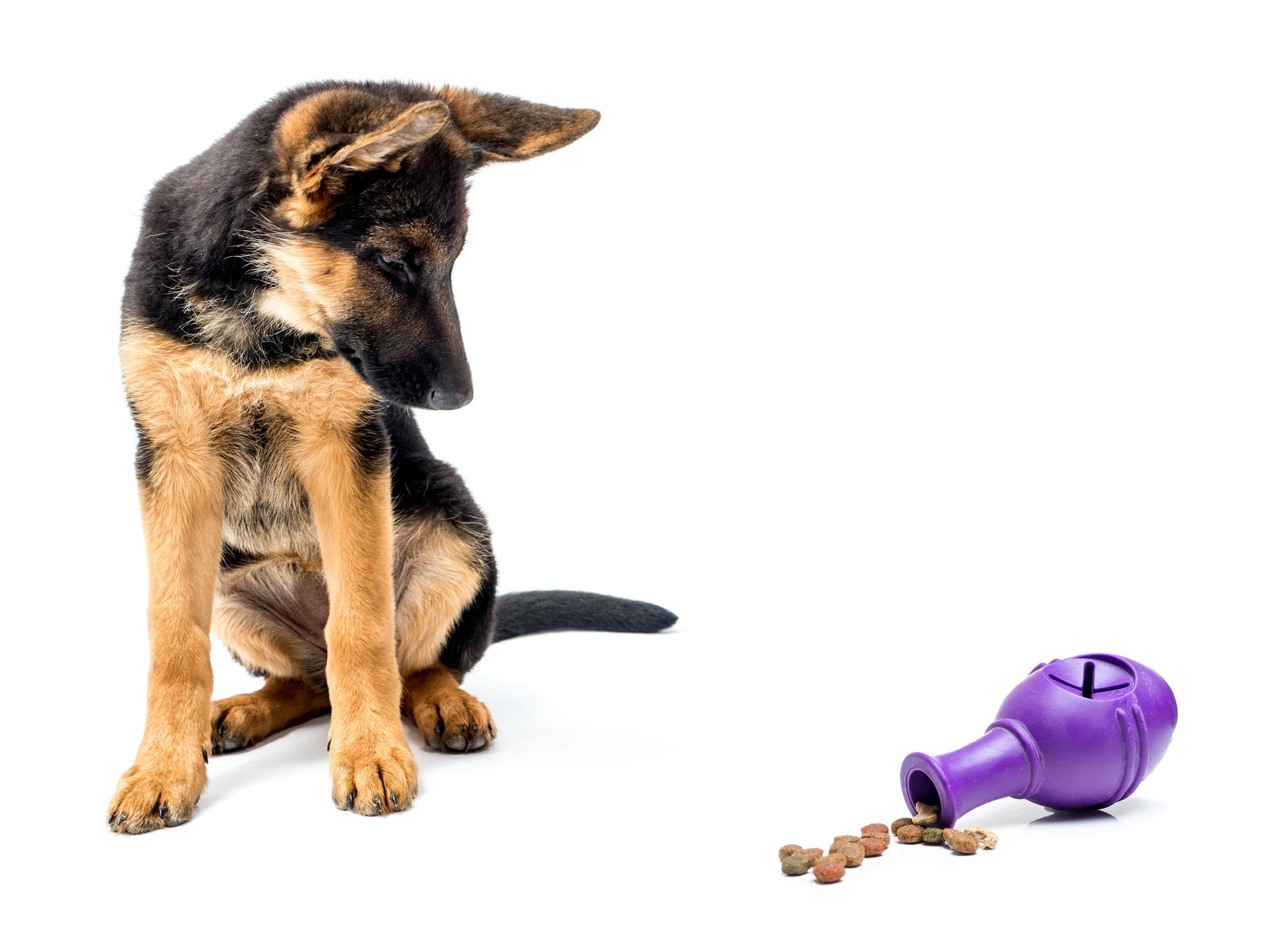
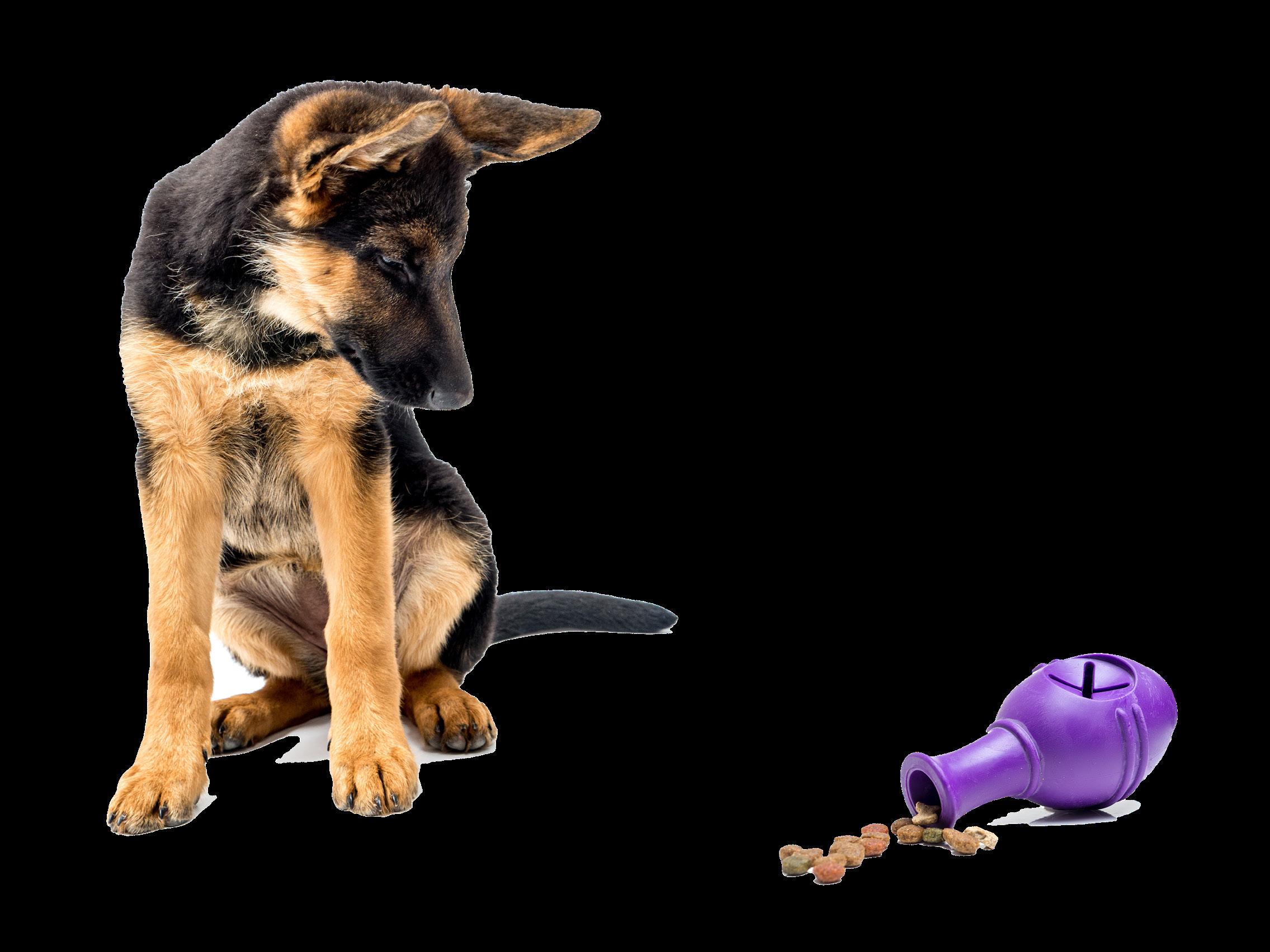
There are many puzzle games you can buy, but if you aren't sure your dog is going to embrace this new challenge, you can make some at home to get him started. The muffin tin is simple and inexpensive. Here's what you'll need to get


Enough tennis balls to fill all the holes on the tray.
Start by putting your dog's favourite treat in each one of the muffin holes and placing a tennis ball in the hole. Place the tin on the floor and let your dog inspect it. If your dog does not immediately try and get to the treats, you can pick up one of the tennis balls and show him the treat underneath. Stand back and watch your pooch figure out how to get to the treats by removing the balls from the tin. Once he has got the hang of the game, you can increase the difficulty by placing the balls back in the tin once your dog has removed them and recovered the treat. This will force him to try and remember which treats he has already removed.
DQ | 5A 66 DOGS AT PLAY
6. PACK AWAY YOUR TOYS
I know what you are thinking - this does not sound fun at all for us, but if done in the correct way, this will be a lot of fun for your dog. It will teach him new skills and is mentally stimulating. This is an advanced game to play with your dog. He should already know basic obedience commands, like how to return an item while playing fetch and the 'drop it' command.
Teach your dog this new skill by asking him to fetch one of his toys off the floor, guide him to the toy basket and give him the command to 'drop it'. If he drops the toy in the basket, reward him like crazy. This may take some getting used to, so be patient, and in no time, you will have your pooch cleaning up his toys and packing them away. Now that's a good boy!
7. THE NAME GAME
Your dog can learn over 100 words, so why not teach him the names of all the wonderful toys he has? Start by using his favourite toy and giving it a name. When playing,

associate the name with the toy. He will soon start to associate the toy with the name. Clever, hey!? Test him by asking him to fetch the toy from a pile of his other toys. Once he has achieved this, you can move on to naming more of his other toys. Take this one step further by teaching him the names of other things around the house and ask him to fetch them for you.
THE SEVEN GAMES
These are just a few of the mental stimulation games out there. You can combine these games with each other or makeup ones. You will build your dog's confidence, flex his brain cells and strengthen the bond between you both. Enjoy!
DQ | 5A 67 DOGS AT PLAY
YOUR DOG QUESTIONS ANSWERED
Are black dogs really harder to rehome?
If we consider how black dogs have been presented historically, we might think of folklore, werewolves or the term ‘black dog’ being applied to describe depressive symptoms. This is such a pity as it risks people becoming conditioned to associate black dogs with negative feelings.

Behaviourally, it is suggested that humans, and perhaps even other dogs, might find black dogs’ body language
more difficult to interpret, perhaps because their black fur makes it harder to observe very subtle body movements like brow furrowing, nose wrinkling, or muscles becoming taut and tense.
Black Dog Day was started to raise awareness of the beauty of these dogs, as it is believed that they are spending longer in rescue centres waiting to be adopted than dogs with other coloured coats. While research has not been formally conducted here yet, anecdotal evidence certainly suggests that these dogs spend longer waiting for a home than their lighter-coloured counterparts.
DQ | 5A 68 ?
How is it that parents of dogs with clear elbows can produce puppies that go onto develop Elbow Dysplasia?
Unfortunately, conditions such as elbow and hip dysplasia are hereditary conditions, and although two parents may have very good health scores themselves, there may be genes within their breeding lines that can still present in these later generations. Obviously, choosing parents who have good health scores, lowers the probability of

the condition becoming apparent in their puppies; however, it does not eliminate the risk altogether. Other factors which can also be the cause of elbow dysplasia are osteochondrosis (OCD) which is a disease of the joint cartilage. OCD can be hereditary but it can also be the result of nutritional issues, such as over or under supplementation of certain vitamins and minerals, or trauma. Small fractures can also develop in the joint, leading ultimately to elbow dysplasia. These often go unnoticed if they are small
My dog is performing at a high level in agility. I’ve been advised to give her antioxidants to support her athletic performance. Is this a good idea?
Strenuous exercise, such as from high level agility, can lead to oxidative damage of the cells and tissues and the high fat diet commonly fed to canine athletes can put them at increased risk. Studies which have looked at the antioxidant properties of fruits
hair-line fractures, or the dog is not exhibiting any major signs of discomfort.
Purchasing a puppy from a registered and responsible breeder helps to limit the chance of elbow dysplasia. However, all owners should be aware that this is not a 100% guarantee that elbow dysplasia will not develop. Having said this, there are now many treatment options available to help alleviate pain and discomfort due to elbow dysplasia, so a diagnosis of the condition can be managed successfully.
and vegetables have shown that exercising dogs may benefit from a diet containing an increased level of antioxidant nutrients to counteract the effect of strenuous exercise. Strawberries and blackberries are an excellent source of antioxidants and are probably the best and most natural way to add antioxidants into the diet.
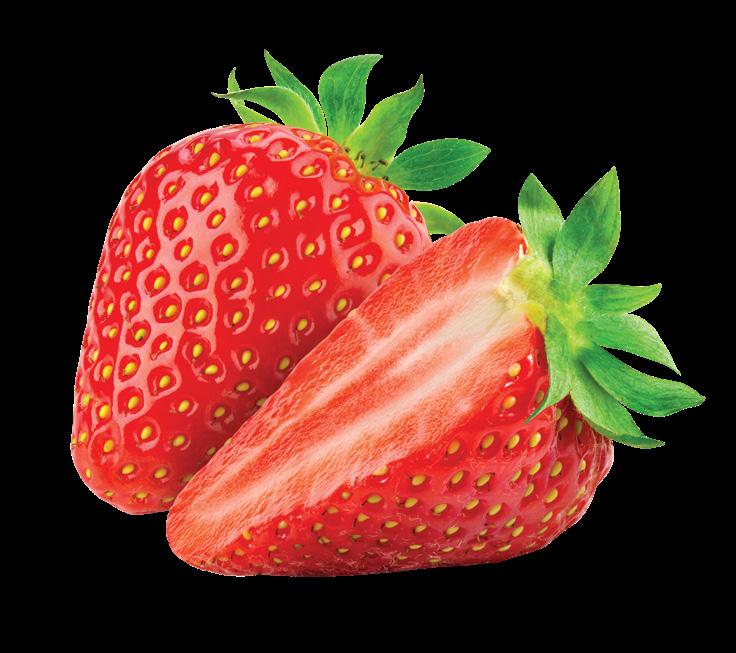
DQ | 5A Q&A
Products we love
PaleoPet Pure THERAWPY Duck, Pear and Ginger Meal for Dogs
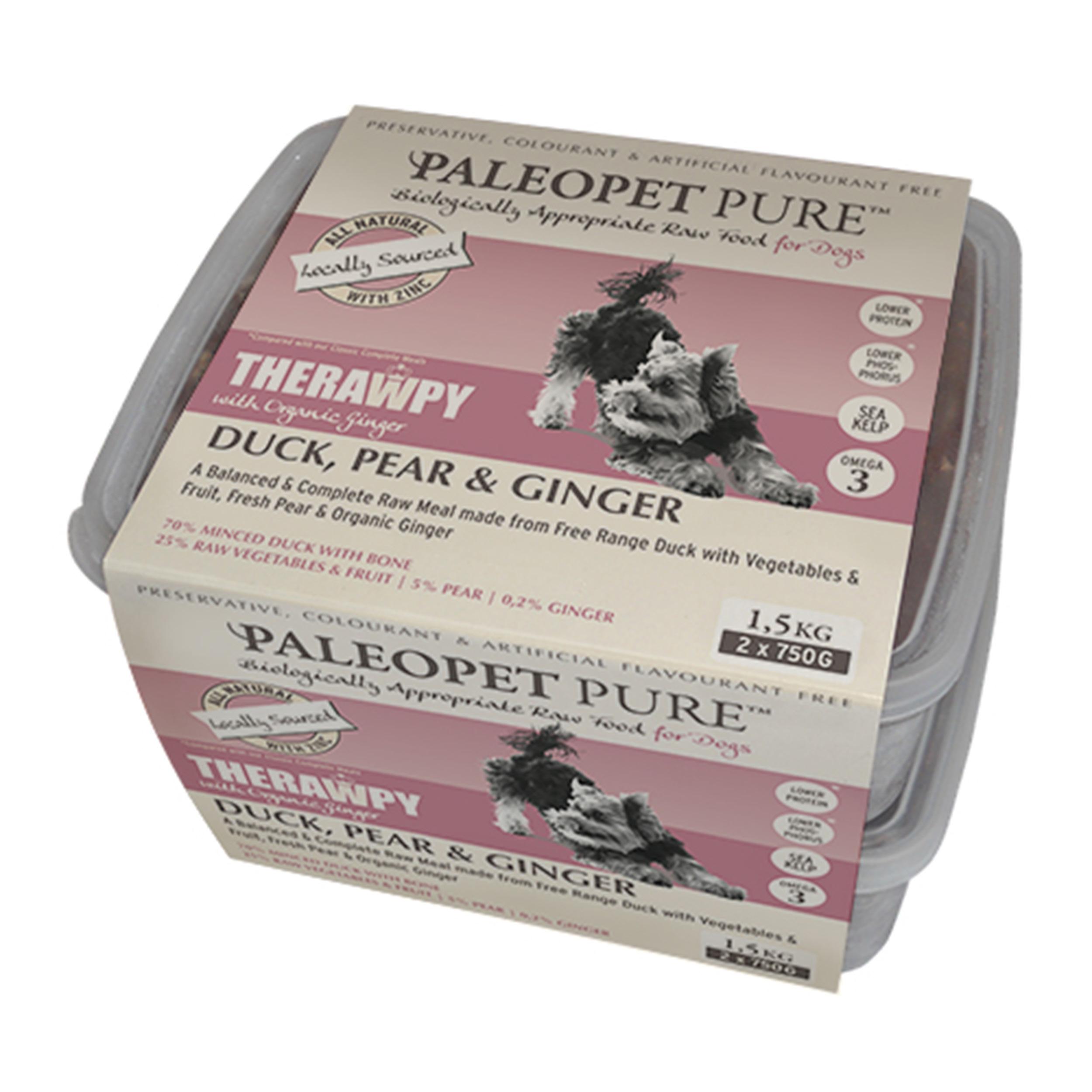
This is a power packed and highly palatable product with pear and organic ginger! Pear contains pectin which aids digestion and ginger is not only a digestive aid, but also contains minerals like manganese, which is necessary for cruciate tendon health.
This product is lower in protein, fat and phosphorus than our PaleoPet Pure Classic Complete Meals, and so is ideal for older dogs requiring a bit more fibre and some digestive help, or dogs with liver or kidney issues.
As this product contains only duck protein, it is a great alternative for dogs with chicken allergies.
As with all PaleoPet Pure Complete meals a
healthy dose of Omega 3 from sustainably sourced phytoplankton is added, along with Kelp and Vitamin E.
The PaleoPet Pure range is FSA Food Safety certified and DALRRD registered. All products are produced using human food grade ingredients in an Audited Food Safe Facility.
Available in convenient, pre-frozen 1.5kg and 750g tubs or as a box of 12 individually wrapped 100g patties. The tubs are re-usable, recyclable and PBA-free.
Products can be purchased online at www.paleopetpure.com or at selected retailers.
DQ | 5A 70
fun
Shopping
follow us on Instagram @dogquarterlymag and Facebook dqmagazine
stay tuned for the next issue of
DQ | 5A 71
DQ | 5A 72 NEXT ISSUE 15TH APRIL 2023 www.dqmagazine.co.za
